If you’re travelling to Korea this winter, you have the chance to see snow-capped mountains, Korean temples blanketed in snow, and many other unique sights from the Land of Morning Calm. So, where does it snow in Korea and what are the best places to see snow? Find out why Korea is known as the ‘land of high mountains and sparkling streams’ by seeing Korea’s natural beauty blanketed in snow at these fun winter locations.
The good news is, you don’t have to go too far to see snow in Korea, especially if you’re visiting during the snowiest months – January and February. From Jeju Island to Seoul, there are snowy sights across Korea to enjoy this winter.
This article will tell you the best places to see snow in Seoul, which winter festivals look good with snowy sights, activities where you can enjoy seeing snow in Korea, and famous places in Korea for the prettiest snowscapes.
Affiliate Disclaimer: This site contains affiliate links and I may earn commission for purchases made after clicking these links.
Best Places To See Snow In Korea
The best place to see snow in Korea is undoubtedly in the mountains, national parks, and ski resorts as these are the highest places in Korea and therefore have the most snowfall. The snow can be knee-deep and falls regularly, creating pristine white landscapes to fall in love with.
When it does snow in Korea, there are plenty of other sights in Seoul and beyond where you can enjoy a wide range of winter activities, get snowy backdrops for your travel pictures, and have fun playing in the snow.
Korean festivals are some of the best places to see snow in Korea as you not only get to enjoy the snowy scenes, you can also engage in fun activities, learn about Korean culture, and try something unique you may never have experienced before, such as ice-fishing or snow sledding.
Top tourist attractions can be even prettier during winter when covered by snow, especially those with winter illuminations shining off the glistening snow. There are many family-friendly attractions to see on a snowy day in Korea, such as Nami Island, Daegwallyeong Sheep Farm, Seoul Grand Park, and Seoul Forest.
I am recommending these places as I’ve visited (or had friends visit) many of them. Others are unmissable spots in Korea with great reputations for winter fun. I personally love to go hiking a lot during winter as it’s so much fun to see the snowy peaks, especially winter hiking on Hallasan Mountain on Jeju Island.
When Does It Snow In Korea?
The first snowfall in Korea in 2023 was on October 21st, 2023, falling on the slopes of Seoraksan Mountain before the autumn leaves had even finished coming out. This was slightly earlier than usual as the highest mountains typically see snowfall in early November.
The Korean snow season runs from late November to early March and it can snow at any time during these months. You’re most likely to see snow in Korea in January and February as these are the coldest months, with temperatures around 0 degrees (and colder at night).
Please note: Korea isn’t a country that sees constant snowfall during winter. It can be sporadic and fall for a single afternoon or a whole week. When it does snow, it typically lasts for 2-3 days.
Where Does It Snow In Korea?
It typically snows more in the mountains than in the cities. Korea is 70% mountainous, though, which means there are loads of places to see snow in Korea.
The tallest mountains will have snow throughout January and February, making them the best places to see snow in Korea. They also see the first and last snow fall each year.
You can still see snow in other areas, even on the palm-tree lined beaches of Jeju Island! Snow can fall anywhere in Korea and the whole country is cold in winter.
However, snow is relatively rare outside the mountainous areas and there are often only 3-4 weeks per year where it will snow in Korean cities, and this is not constant.
Planning to visit Korea? These travel essentials will help you plan your trip, get the best deals, and save you time and money before and during your Korean adventure.
Visas & K-ETA: Some travellers to Korea need a Tourist Visa, but most can travel with a Korean Electronic Travel Authorisation (K-ETA). Currently 22 Countries don’t need either one.
How To Stay Connected: Pre-order a Korean Sim Card or a WiFi Router to collect on-arrival at Incheon Airport (desks open 24-hours). Alternatively, download a Korean eSIM for you travels.
Where To Stay: For Seoul, I recommend Myeongdong (convenient), Hongdae (cool culture) or Gangnam (shopping). For Busan, Haeundae (Beach) or Seomyeon (Downtown).
Incheon Airport To Seoul: Take the Airport Express (AREX) to Seoul Station or a Limo Bus across Seoul. Book an Incheon Airport Private Transfer and relax to or from the airport.
Korean Tour Operators: Tour companies that have a big presence in Korea include Klook, Trazy, Viator, and Get Your Guide. These sites offer discounted entry tickets for top attractions.
Seoul City Passes: Visit Seoul’s top attractions for free with a Discover Seoul Pass or Go City Seoul Pass. These passes are great for families and couples visiting Seoul – you can save lots.
How To Get Around: For public transport, grab a T-Money Card. Save money on Korea’s high speed trains with a Korea Rail Pass. To see more of Korea, there are many Rental Car Options.
Travel Money: Use money exchanges near Myeongdong and Hongdae subway stations for the best exchange rates. Order a Wise Card or WOWPASS to pay by card across Korea.
Flights To Korea: I use flight comparison sites such as Expedia and Skyscanner to find the best flights to Korea from any country. Air Asia is a good option for budget flights from Asia.
How To Learn Korean: The language course from 90 Day Korean or Korean Class 101 both have well-structured lessons and lots of useful resources to help you learn Korean.
Where To See Snow In Seoul
When it snows in Seoul, the city transforms into a winter wonderland, with snow-topped fortress walls and palaces, frozen lakes and rivers, and historic sights buried in snow.
As Seoul is a must-see destination for travellers to Korea, the first 10 snowy sights in Korea are all based in Seoul. These locations are perfect for those who want to capture pretty pictures of the city bedecked in powdery white snow.
Many of these snow spots in Seoul are great places to visit at any time of year, but I think they look even more magical when covered in snow. Whenever you visit, you’re sure to enjoy these sights.
1: Seoul’s Royal Palaces
Located in the centre of Seoul, and within walking distance from each other, Seoul’s royal palaces are a beautiful reminder of Korea’s past and definitely something to add to any winter bucket list for South Korea.
The bright greens, reds, and other vivid colours that set these traditional buildings apart from the drab greys of modern buildings look even more impressive than normal when covered in shiny white snow during winter. Enjoy delicious, hot Korean winter street snacks as you explore these cold palaces and frozen lakes.
How to get there: The royal palaces (and nearest subway) are Gyeongbokgung (Anguk Station), Changdeokgung (Anguk Station), Changgyeonggung (Anguk Station), Deoksugung (City Hall Station), and Gyeonghuigung (Gwanghwamun Station).
Tip: You can get free entry to the palaces if you wear hanbok. Gyeongbokgung Palace is closed on Tuesday, the others are closed on Monday.
Snowy Hanbok Pictures: If you want to get the most memorable, authentically Korean pictures during your winter trip to Korea, why not rent traditional Korean hanbok when you’re in Seoul? Alternatively, rent an Ewha Korean School Uniform near Lotte World & Lotte Tower for fun pictures.
2: Bukchon Hanok Village
The historic district of Bukchon Hanok Village is full of old hanok buildings beautifully preserved and restored. Walk through these peaceful streets with wooden beams and black tiles covered in soft white snow.
This is also a great place to dress up in hanbok. Grab your camera, choose one of the many doorways or streets, and take some pictures.
If the snow gets too heavy, visit one of the many cafes and tea rooms and experience traditional Korean drinks in a warm and cosy atmosphere.
How to get there: Take the subway to Anguk Station (Line 3 – orange) and walk north from exit 2. You should see signs for the Bukchon Hanok Village straight away.
Tip: Bukchon Hanok Village is a residential area and it’s best to visit during the daytime to not disturb the residents. There are many hanbok rental shops nearby and both Gyeongbokgung and Changdeokgung palaces are within walking distance of Bukchon Hanok Village.
Try A Hanok Stay In Seoul: If you want to experience sleeping in a Korean hanok house in winter (with heated flooring), check out Bonum 1957 Hanok and Boutique in Bukchon Hanok Village.
3: N Seoul Tower (Namsan Tower)
A must-see sight in Seoul, the N Seoul Tower is great for looking out to see snow blanketing Seoul like a clean cotton sheet in all directions.
Take a hike up the short trail to the top of Namsan Mountain to reach the N Seoul Tower, passing by snow-covered fortress walls and ghostly snow-lined limbs of trees on the way.
If hiking isn’t for you, take the Namsan Cable Car to the top and enjoy a pleasant ride, looking down over central Seoul, royal palaces, and Bukhansan National Park in the distance.
How to get there: There are several ways to get to the N Seoul Tower, including on foot, by cable car, bus, or car. The most scenic way is by cable car. Walking takes about 30 minutes from Myeongdong Station and involves an uphill ascent (paved).
Tip: You can save money on entrance fees and attractions at the tower by booking online, which also avoids long queues and gives you more time to see snowy sights in Seoul.
4: Lotte World Theme Park
For those travelling with children, you certainly can’t beat the Lotte World Theme Park in Jamsil. See the Magic Island (pictured), which is located on the edge of the pretty Seokchon Lake.
From here, you might see frozen waters with snow on the empty cherry blossom trees that are waiting to show their glory in the coming spring. A perfectly magical spot to see snow in Seoul.
Take a trip up to the 123rd floor of the Seoul Sky Observatory in the nearby Lotte World Tower for incredible views across snowy Seoul.
How to get there: Take the subway to Jamsil Station (Line 2 – green or Line 8 – red). Lotte World is right outside subway exit 4 and the Lotte World Tower is outside exit 1.
Tip: Save money on the cost of the entrance by booking online or get free entry with the Discover Seoul Pass. Stay late for night views of Seokchon Lake and Lotte World Tower.
Perfect Discover Seoul Pass Itinerary: If you want to save money in Seoul, the Discover Seoul Pass is one of the best ways to do it. Get free entry to dozens of top attractions, including Lotte World Theme Park. Find an itinerary to suit you in my Discover Seoul Pass Itineraries article.
5: Bukhansan National Park
An obvious choice for snow in Seoul has to be in Seoul’s own national park – the ruggedly astounding Bukhansan National Park. You’ll probably recognise this mountain range if you’ve been to the top of the N Seoul Tower and looked north. You can’t miss it.
I’ve climbed Bukhansan several times, including in mid-March, and there was still snow falling at that time. In January and February, you’re more likely to see thick, powdery snow here than in other places in Seoul.
How to get there: Take the subway to Gupabal Station (line 3 – orange), Exit 2, and then transfer to a bus outside the station. Buses 34, 701, 702, and 704 all go to the main entrance.
Tip: Join a hiking group on Facebook, such as Seoul Hike, if you’re not confident about hiking on your own or you want to hike with other people.
Here’s some information about how to climb Bukhansan in winter, how to hike to Baegundae Peak – the highest peak in Bukhansan, and some general hiking in Korea tips that’ll help you prepare.
6: Seoul’s Fortress Walls
Walk along Seoul’s lofty fortress walls to gaze out over the city when it’s covered in snow, and to see clean snow not trampled down by traffic and pedestrians in the busy streets below.
The fortress walls are great for a bit of winter exercise (but be sure to wrap up warm), and see a historic side of Seoul.
The fortress walls are over 600 years old and are the perfect place for a morning stroll or night hike without having to leave the city.
How to get there: Take a subway to Hyehwa Station (Line 4 – light blue) and walk east up the hill towards the park. Alternatively, head to Dongdaemun Station (Line 4 – light blue) and you’ll find fortress walls here, too.
Tip: If you’re feeling active, start your snowy day out in Seoul walking from Naksan Park, down through Dongdaemun towards Namsangol Hanok Village, and then walk up to the N Seoul Tower.
7: Haneul Park & Han River Parks
The Haneul (Sky) Park near World Cup Stadium in Seoul, a great place for autumn leaves, looks so beautiful when the snow falls in winter. The tall reeds are crested in white snow and offer many interesting photo opportunities.
Perhaps even better is the meta sequoia lane in the adjacent Nanji Han River Park. Meta sequoia (dawn redwood) are tall conifers soaring up to 165 foot into the air, certainly unmissable in the snow. The dark trunks provide a wonderful contrast to light snow.
How to get there: Take a subway to World Cup Stadium (Line 6 – brown) and head towards the rivers. There are numerous parks in this area. Haneul Park is on top of the hill – you can’t miss it. You can also find the Oil Tank Culture Park here, a free attraction that is worth a visit.
Tip: There are loads of pretty riverside parks to see the snow in Seoul, including Yeouido Hangang Park and Banpo Hangang Park. Take a stroll along the Han River and enjoy them all. If it’s cold enough, the river might even be frozen, too!
8: Seoul Land In Seoul Grand Park
Seoul Land, located in Seoul Grand Park, is a fun spot for families to enjoy a day outside playing in the snow. Besides the regular attractions on offer in the park, there are special winter activities available for the snowy season, including snow sledding on Samchulli Hill.
This area is great fun for kids and adults alike and everyone can have fun playing in the snow in Seoul Land. Grab a sled, walk to the top of the snowy mound, then zip down to the bottom. Also check out the winter illuminations here.
How to get there: To get to Seoul Grand Park, take the subway to Seoul Grand Park Station (Line 4 – light blue). The Elephant Train runs between Seoul Land, Seoul Zoo and Seoul Grand Park.
Tip: Seoul Zoo is also located in Seoul Grand Park and has a wide variety of animals to see. You can visit both areas in a day and you can get discounted tickets to see all the attractions.
9: Seoul Forest & Seongsu-Dong Neighbourhood
Seoul Forest in Seongsu-dong district has been described as the Hyde Park or Central Park of Seoul. Wedged between two parts of the Han River, the park is a welcome oasis from the busy city any time of the year.
You can find dozens of deer in Seoul Forest, giving you the impression of being in Lapland, not Korea. This is a family park, so if you’re travelling with children, they can have fun with the animals (there’s a petting zoo), snow covered trees, frozen lakes, and play on the many slides and swings.
How to get there: Take the subway to Seoul Forest Station (Bundang Line – yellow/orange). You’ll probably have to transfer at Wangsimni Station if you’re coming from central Seoul.
Tip: If the cold weather becomes too much, head into the hip Seongsu-dong area to warm up. You’ll find lots of artsy shops, cafes, the Under Stand Avenue (shipping container galleries, shops, and cafes), unique restaurants, and several museums and galleries.
10: Ice Skating Rinks In Seoul
One of the most popular ice skating rinks in Seoul is the Seoul Plaza Ice Skating Rink, located close to Deoksugung Palace, meaning you can combine these two great snowy locations in Seoul.
There are other indoor and outdoor rinks you can visit in Seoul, too. Why not grab some skates when it snows in Seoul and slip and slide through the hard ice, or watch as others do it more gracefully? A wonderful wintry activity amongst the snowy streets of Seoul.
How to get there: Take the subway to City Hall Station (Line 1 – dark blue). The ice rink is near the City Hall building, opposite Deoksugung Palace.
Please note: Check ahead to make sure the ice skating rinks are open when you plan to visit. There may be closures this winter due to the ongoing pandemic in Korea.
Winter Attractions To See Snow In Korea
Korea has many wonderful attractions to see during winter. They’re fun places to visit any time of the year, but excel in winter when the snow falls.
You can visit a lot of these on day tours from Seoul and other major cities. Where there are tour options, I will add links for your convenience.
Here are some of the best attractions to see when it’s snowing:
Nami Island
Nami Island, famous for its long, tree-lined walkways, unique statues, and cosy cafes, provides dozens of photo-worthy spots to enjoy the snowy sights, as well as snowman statues and winter lights. Not only can you witness the natural beauty of Nami Island covered in snow, you can also experience cultural festivals, see the island’s wildlife, and ride around the island on a rented bike.
How to get there: Here’s a guide about How To Get To Nami Island by public transport.
Tour options: There are plenty of tour options to take you to Nami Island and other locations in Gapyeong with a day tour departing from Seoul. Check out Klook, Trazy, and Get Your Guide for their various packages.
Gangchon Railbike
Pedalling your way along an abandoned railway track with views of the Bukhan River and forested valleys all covered in snow is the perfect way to spend a sunny winter’s day. Located close to Nami Island (and available for day trips from Seoul), the Gangchon Railbike Park offers a chance to get out and see Korean nature draped in snowy blankets.
Address in Korean: 강원도 춘천시 신동면 김유정로 1383
Tour options: There are plenty of tour options to take you to Nami Island and other locations in Gapyeong with a day tour departing from Seoul. Check out Klook, Trazy, and Get Your Guide for their various packages.
Daegwallyeong Sheep Farm
Tucked away in the ‘Alps of Korea’, the Daegwallyeong Sheep Farm is an interesting place to explore Korea’s winter scenery on a snowy day. Gaze at the fields and surrounding forests blanketed in snow whilst trying to find the camouflaged sheep.
The Daegwallyeong Sheep Farm is located close to Gangneung City on Korea’s east coast, a city that has lots of lovely seaside cafes to stay warm in during winter.
Address in Korean: 강원도 평창군 대관령면 대관령마루길 483-32
Onyang Hot Springs
The hot waters of Onyang Hot Springs (온양온천지구), Asan, are the ideal remedy for the cold winter weather, and also provide a unique place to see falling snow. Sit outside in the steaming hot water while snow falls from above and melts into the pool. Not only are the hot springs a relaxing place to enjoy winter in Korea, they’ll do wonders for your body with their healing waters.
Address in Korean: 충청남도 아산시 온천대로 1459
Wondaeri Birch Forest
The Wondaeri Birch Forest near Inje, home to more than 700,000 silvery birch trees, provides a peaceful winter trek through the snow. There are many paths to explore in this tranquil forest, winding through the tall trees, with plenty of photo-worthy spots and places to sit and contemplate the scenery.
The four main trekking courses are:
- Birch Forest Course
(0.9km, 40-50 mins) - Healing Course
(1.5km, 1.5 hrs) - Exploration Course
(1.1km, 40 mins) - Healing Course
(2.4km, 1.5 hrs)
The easiest way to get to the Wondaeri Birch Forest, which is located in Gangwon Province, is to take a day tour from Seoul, such as this Wondaeri Tour by Klook.
Address in Korean: 강원도 인제군 인제읍 원대리 581
Snowy Korean Winter Festivals
Korea loves to hold festivals in all seasons, and winter provides some of the most interesting festivals of the whole year. These winter festivals celebrate the winter snow and activities that you can enjoy best when the temperature drops below zero.
Wrap up warm and head to these festivals for the best sights of snow in Korea and also to have a fun day out. From fishing in icy lakes, to evening strolls through snowy winter illuminations, there are so many charming ways to enjoy seeing snow.
Ice Fishing Festivals
A wonderfully unique place to experience snowy (and icy) fun in Korea is at one of the big ice-fishing festivals held in January and February. These are held in smaller towns across the country and offer you the chance to try a range of activities in snowy surroundings.
Hwacheon Sancheoneo Ice Fishing Festival: This festival claims to be one of the 4 best winter festivals in the world and is one of my favourite Korean winter festivals. Located in the northern city of Hwacheon and running for more than 3 weeks in January, this festival gives you the chance to experience life as an ice fisher, trying to catch your lunch even when the water is frozen. You can also enjoy a range of other wintry attractions, including sledding, ice sculptures, and bare-handed ice fishing.
Address in Korean: 강원도 화천군 화천읍 중리 196
Learn more: Check out my guide to visiting the Hwacheon Sancheoneo Ice Festival to learn more about this fun winter festival and see why it’s a must-visit this winter.
Pyeongchang Trout Ice Fishing Festival: Home to the 2018 Winter Olympics, you can understand why Pyeongchang would be the perfect place to host this winter festival. The main draw at this festival is the chance to catch (and then cook) your own lunch. Head over to the large icy river and get ready to fish.
Address in Korean: 114-1, 하진부리 진부면 평창군 강원도
Inje Ice Fishing Festival: This winter festival has a lot more to offer than just ice fishing. Running for more than 20 years, the Inje Ice Fishing Festival has developed a range of other activities for fun in the snow. You’ll find family-friendly areas such as the Ice Playground and Snow Playground. There are loads of ice and snow-based winter activities and sports for all ages.
Address in Korean: 강원도 인제군 남면 부평리 555-2
Hongcheon Ggong Ggong River Ginseng Trout Festival: Want to try an ice fishing festival in Korea with a difference? Then head to the Hongcheon Ggong Ggong River Ginseng Trout Festival, where the fish are fed on a diet of 6-year old Hongcheon Gingseng. Besides the healthy lunch you can catch with your bare hands, there is also a lot of wintry fun to be had nearby, including Vivaldi Park Snow World for ice sledding and the ice sculpture exhibition.
Address in Korean: 강원도 홍천군 홍천읍 너브내길 59
Please Note: This festival hasn’t been confirmed for 2024 yet.
Winter Illumination Festivals
What’s better than seeing the glittering white snow? How about millions of colourful lights reflected in that snow, creating a crystalline carpet of colours in some great gardens and parks? You’ll find incredibly colourful displays at these festivals. There are lots of winter lights festivals across Korea, including many that you can visit on a day trip from Seoul.
Garden Of Morning Calm Lighting Festival: The Garden of Morning Calm Lighting Festival is one of the top spots to visit during the dark, wintry days. Walking through the gardens when the sun has set is like entering into a magical world, a true winter fantasia. Explore the diverse themed areas that focus on animals, plants, and even love. A great place to take your loved one for some romantic memories walking between the electric forests and white snow.
Address in Korean: 경기도 가평군 상면 수목원로 432
Herb Island Light Festival: These herb gardens transform into an electric circus of lights, illuminations, and wonderful displays in winter. Herb Island also has a Santa’s Village area, with over 300 Santa Clauses to meet. Great for unforgettable snowy Christmas pics.
This winter festival is a place for lovers to share a romantic stroll, or for friends to make lasting memories of their adventures together. Families will also enjoy a magical time here.
Address in Korean: 경기도 포천시 신북면 청신로947번길 35 KR
Seoul Lantern Festival: This dazzling festival is held in Gwanghwamun Square outside Gyeongbokgung Palace, giving over it’s large pedestrianised areas to massive glowing lanterns. These installations are definitely the main draw, featuring different concepts each year like aquarium scenes, starry nights, nature landscapes, and Korean folktales. Last year there was a giant rabbit.
Address in Korean: 서울 종로구 세종대로 175 세종이야기
Winter Theme Park Festivals
You might not think about visiting a theme park in winter, but there are actually a lot of fun things to do in this season, including some big winter festivals that embrace the cold weather and give you a chance to enjoy snowy sights.
Although several of the major theme parks are in Seoul, which I’ve covered in the article below, I’ll include the two biggest theme parks here for your information. On a snowy day, they’ll be a great place for a family fun day out.
Everland Winter Wishes Festival: Everland is one the best theme parks in Korea, and a fun place to enjoy snow and winter activities. The festivals on offer change each year, but typically include a Christmassy-style festival called Winter Wishes in November and December and then a snow-based festival from January until early March.
Address in Korean: 경기도 용인시 처인구 포곡읍 에버랜드로 199 KR
Tour options: If you want to get to Everland this winter, save money with a discounted one day pass from Klook. To get to the park, you can also arrange round-trip transportation from Seoul.
Lotte World Christmas Miracle: As you can see from the picture above, Lotte World in Jamsil, Seoul, takes a lot from Disneyland and even has a fantasy-themed ‘Magic Island’, which sits in the lovely Seokchon Lake. For families looking for a magical place to see snow in Korea, then the Lotte World Christmas Miracle is for you.
There are Christmas decorations, parades, carols, an appearance from Santa Claus, and a lot of photo-worthy spots to see the snow. If it gets too cold, the good news is that the rest of the theme park, Lotte World Adventure, is indoors.
Address in Korean: 서울특별시 송파구 올림픽로 240
Tour options: Save money on entrance fees with discounted one day pass from Klook for big savings on entry to Lotte World Adventure, Lotte World Aquarium, and Seoul Sky Observatory.
Snow & Ice Festivals
What could be a better place to see snow in Korea than at a festival dedicated to the powdery white goodness? There are a couple of big festivals that run in January each winter, where you have a good chance to see snow and enjoy a wide range of snowy activities, too.
Taebaeksan Mountain Snow Festival: The Taebaeksan Mountain Snow Festival offers you the chance to see rural Korea, up in the mountains of Taebaeksan National Park. Walk among gigantic snow and ice sculptures and try a spot of hiking, too. You can enjoy snow sliding, snow hiking, pop into an ice igloo, and see the various performances at this festival. Come on the weekend for performances, or any time for snowy beauty. Taebaeksan is one of the best regions to hike and see snow in Korea, so don’t miss it.
Address in Korean: 강원 태백시 태백산로 4834-31
Daegwallyeong Snow Festival: Located at the previously mentioned Daegwallyeong Sheep Farm, there is a snow festival that runs during the middle of January and has a range of fun activities to enjoy in the snow. Try snow sledding and sliding down the snowy slopes into soft snow below. You can also walk around huge ice sculptures representing building-sized structures, such as castles, people, characters, and more. There are performances during the day, parades, and a fireworks show to light up the skies at night.
Address in Korean: 강원도 평창군 대관령면 대관령마루길 483-32
See Snow At Ski Resorts In Korea
There are many ski resorts in Korea, where you can enjoy a range of winter sports, or play around in the snow and make a snowman. As they’re high up in the mountains, these resorts can have snow for several months, giving the best chance to see snowy landscapes.
Skiing and snowboarding are very popular winter activities in Korea and there are a range of resorts that offer slopes and training for all levels, from absolute beginners to experts.
Below is a list of the ski resorts in Korea and their opening dates for the 2023-2024 ski season. Ski resorts in Korea open in December and stay open until February or March, depending on the available snow.
Most of the ski resorts in Korea are in the north, located in Gyeonggi and Gangwon province. These are really convenient for day trips or weekend breaks from Seoul and you’ll find a lot of locals visiting on the weekends.
Some resorts, such as Vivaldi Park, have a separate area for families or non-skiers where you can ride sleds, slide down icy slopes, mess around in playgrounds, see winter illuminations, chill in cosy cafes, and just take in the sights.
Below are some of the best ski resorts in Korea for winter snow sports. I’ve added links to some package tours from tour companies in Korea. These companies offer a range of well-priced tours to ski resorts, as well as discounted ski passes, equipment, and overnight stays.
Booking a tour often works out a lot cheaper and easier than trying to travel yourself.
Vivaldi Park Ski Resort: The most popular ski resort in Korea, with state of the art facilities and amazing courses. There are 12 slopes and 10 lifts here, with something suitable for any level, as well as Snowy Land – a family fun play area to mess around in the snow.
Alpensia Ski Resort: One of the main resorts used for the 2018 Winter Olympics, Alpensia Ski Resort offers a range of winter activities for levels of all ages. There are 6 courses for various skill levels.
Elysian Gangchon: The stunning Elysian Gangchon Ski Resort offers skiing, snowboard, and snow sledding. You can also hike around the area and see the beautiful snow-covered Korean nature.
Yongpyong Ski Resort: Another resort used for the 2018 Winter Olympics. This is a large ski resort that has 28 slopes to choose from. Very popular with ski and snowboarding enthusiasts.
Jisan Forest Ski Resort: Feauturing a range of slopes from beginner to advancd, Jisan Forest is a compact ski resort nestled in forested slopes that also has a snow sleigh park to play in and teaching area for people interested in learning to ski for the first time.
Welli Hilli Snow Park: If you’re into snowboarding, this is one of the best resorts in Korea for you. Featuring one of Korea’s few half-pipes, these courses favour snowboarders over skiers.
Eden Valley: Looking to ski close to Busan? This ski resort on the slopes of Sinbulsan Mountain has 7 slopes for different levels and has a ski school for those looking to learn to ski or board.
There are plenty of ski tours and day trips to ski resorts available. If you want to check out a different ski resort or package, these companies have a wide range of ski tours for you.
Hike In Korea’s Snowy Mountains
This is one of my favourite winter activities and there are lots of wonderful national parks across Korea where you can find snowy mountain peaks.
Not only can you hike and trek through the increasingly deeper snow, you’ll also get to see traditional Korean Buddhist temples covered in snow, which is a sight worthy of the effort alone.
Whilst any national park would be good to visit in winter, these 5 mountains and national parks have some of the best snow scenes or highest chances of snow.
Taebaeksan Mountain
Taebaeksan Mountain, a holy place littered with shamanistic shrines, is one of the best mountains for seeing snow in Korea. It’s tall, at over 1,500 metres, and located in the heart of the Korean Alps. If you come to Taebaeksan, be sure to check out the aforementioned Taebaeksan Mountain Snow Festival, too.
Deogyusan Mountain, Muju
A personal favourite of mine as it’s close to Daejeon, Deogyusan Mountain is one of the tallest mountains in Korea and offers a great day hike to the top. Start by passing through snowy valleys, eat lunch at a snow-covered temple, and then ascend to the all-white peak. The peak is right next to Deogyusan ski resort, which offers fantastic views of the snowy slopes and a scenic cable car that you can ride to get down the hill.
Cheonwangbong Peak, Jirisan
The highest peak in Jirisan National Park and the second highest mountain in Korea, Cheonwangbong offers a rare chance to sleep overnight and make a sunrise hike in the morning to see rows of mountains covered in snow and the valleys below. You don’t have to stay overnight, however, you can still hike in Jirisan during the day see many snowy sights and walk through snow that can be knee-deep.
Hallasan Mountain, Jeju Island
Can you believe there’s deep snow only 20 minutes from sandy beaches on a semi-tropical island? On the slopes of Hallasan Mountain, Korea’s only active volcano, you can see some incredible snowy scenes whilst looking out at the coast.
If you’re looking for snow on Jeju Island, then Hallasan is the place to go. There are several courses that lead to the peak of Hallasan, or pass by the side, and all offer some of the best snow scenes in Korea I’ve ever seen. The best part? Sliding down the pathways on the way back down.
Read my detailed guide about how to hike Hallasan in winter for more information about making a hiking reservation, what to wear, how to get there, and lots more.
Seonjaryeong Ridge, Pyeongchang
Seonjaryeong, located close to Gangneung and the aforementioned Daegwallyeong Sheep Farm, offers one of the prettiest treks through winter snow. It’s also known as one of the snowiest places in Korea. The trek through this area is slow and steady (not steep), passing fir-lined snowscapes and suitable for most hikers. The main route takes about 4 hours to complete.
Korea’s National Parks: Almost all Korean national parks with tall mountains will have snow on them, so if you can’t get to one of these listed above, it’s still worth visiting one that is closest to you. Bukhansan National Park is easiest for visitors to Seoul, Jirisan National Park is good if you’re in Busan.
For those in Jeju, be sure to check out Hallasan National Park. Check out my list of the 10 Best National Parks in Korea packed with useful information all about them. Not sure about how to go hiking in Korea? Don’t worry, I’ve got you covered with these 21 Top Hiking In Korea Tips.
Tips To Enjoy The Snow In Korea Safely
Here are a few tips for enjoying the Korean snow sights safely. Winter may be colder and icier than you’re used to, and being prepared will save you from problems later.
Wear The Right Clothes: First, I want to say how important it is to wear the right clothes. The ice can be slippery, the weather is bone-numbingly cold at times, and the snow can get everywhere. Wear several layers and make sure you have a thick jacket when you go outside.
Be prepared for the weather and you should be fine. Even if you’re not, Korea has all you will ever need to survive and you can buy stuff in Korea. Check out the markets near Seoul Station or in Myeongdong Market and Namdaemun Market for cheap winter clothes.
Bring The Right Equipment: Hiking boots are a must if you plan to hike one of Korea’s many mountains. Whilst you don’t need to dress like a professional hiker all the time, the right equipment will definitely help you out a lot. If you’re going hiking in deep snow or ice, find out whether or not you’ll need crampons (probably) to stop you slipping. And try to bring some hiking poles, too.
Pack Some Heat: Heat packs, whilst not too great environmentally, are certainly a wonderful way to keep warm and stop your fingers from falling off. You can buy these from convenience stores, cosmetics shops, and supermarkets.
Look After Your Skin: Winter is the driest season in Korea and your skin will dry out quickly. Be sure to pack lots of skin cream, hand cream, and lip balm and apply them daily. You can buy these from cosmetics shops in Korea at reasonable prices.
Stay Hydrated & Fill Up: As mentioned, winter is very dry. Stay warm and drink lots of hot drinks. Stay hydrated to avoid problems, especially if you’re out in the mountains. You can get heated drinks at convenience stores, including healthy ginseng drinks for extra energy.
Try some Korean Winter Dishes, you won’t regret it. There’s nothing like a bit of spice for staying warm inside, but be careful with some of it or you’ll be sweating like a turkey at Christmas.
Book Ahead To Avoid Disappointment: Winter festivals and hotels in popular places can sell out far in advance. To avoid disappointment, make sure to book tours and accommodation as soon as you make plans to go somewhere.
Wherever you go to see snow in Korea, I hope you have a safe and exciting time!
Visiting Korea In Other Seasons
Can’t travel to Korea in winter? No worries, Korea has so many amazing sights to see and things to experience all year round. Here are a few articles that will help you out in other seasons:
Spring in Korea is a time for Korean cherry blossoms and Korean spring festivals that celebrate the return of nature. The weather is warm, making it one of the best times to visit Korea. Visit the mountains in spring for good hiking and to see the celebrations for Buddha’s Birthday.
Summer in Korea is really hot, making it perfect for indulging in sweet Korean summer dishes. There are lots of fun summer activities to enjoy, such as water sports, camping, and beach trips. It’s also wet, so these indoor activities in Seoul will help you plan for the worst.
Autumn in Korea is all about the incredible Korean autumn foliage, where you can see golden gingko leaves and multi-coloured maple leaves turning from green to gold and red. There are also loads of harvest and cultural festivals to enjoy and amazing weather.
If you want details about what to see, do, eat, and discover each month of the year, check out this guide to Korea’s seasons, which includes month-by-month and season-by-season guides. For information about festivals in Korea, read my guide to Korean festivals.
Where To See Snow In Korea FAQs
Finally, here are a few FAQs about where to see snow in Korea, in case the above information didn’t cover enough for you. If you have any other questions you’d like to ask, feel free to leave a comment.
Does It Snow In Korea?
Yes. It snows in Korea every year in the mountains and ski resorts. It also snows in cities and other areas of Korea, but not as frequently. For the best chance to see snow in Korea, visit a ski resort or go hiking in one of Korea’s national parks.
When Does It Snow In Korea?
The first snowfall in Korea is usually in November, but can be as early as October. The most common months to see snow in Korea are January and February, which have the highest levels of snowfall in Korea.
When Is The Best Month To See Snow In Korea?
The best months to see snow in Korea are January and February. These are the months with the heaviest snowfall in Korea. You can still see snow in November, December and early-March, but the chance of seeing snow outside of the mountains is lower.
What Is Winter Like In Korea?
Winter in Korea is cold and dry. The temperature in Korea, especially in the northern regions, stays around or below zero degrees Celsius during the day and even lower at night. As winter is the driest season in Korea, that means there isn’t much rainfall, which makes it good for travelling.
Can I See Snow In Korea?
Yes. You can see snow in Korea in many places, including in ski resorts and in the mountains. However, snow is never guaranteed and it is infrequent outside of the mountainous regions. The amount of snowfall during winter fluctuates annually and some winters in Korea may see a lot of snowfall, whilst other winters don’t get much at all.
Can I Ski In South Korea?
Yes. There are a wide range of ski resorts in Korea that are open for winter skiing and other winter sports. These typically run from December until February when the snowfall is heaviest. Most of the ski resorts are in the northern half of South Korea, but there are ski resorts in other areas, too.
Does It Snow In Seoul?
Yes. It snows in Seoul during winter, but it is unpredictable. There is usually a few weeks of snow in Seoul during January or February, which are the months with the highest snowfall in Korea.
Does it snow in Korea in November?
It can snow in Korea in November, but it’s not common, especially outside of the highest mountains. It snows as early as October in Korea, but this is usually only in the mountains of Gangwon Province. It’s possible to see snow in Seoul in November, but not likely.
Does it snow in Korea in December?
It can snow in Korea in December, although snow is never guaranteed at any time of year. Seoul and other cities can see snowfall and the mountains, which include many ski resorts, usually see snowfall in December.
Liked This? Pin It For Others
If you enjoyed reading this article, then please share this with your friends on Pinterest.
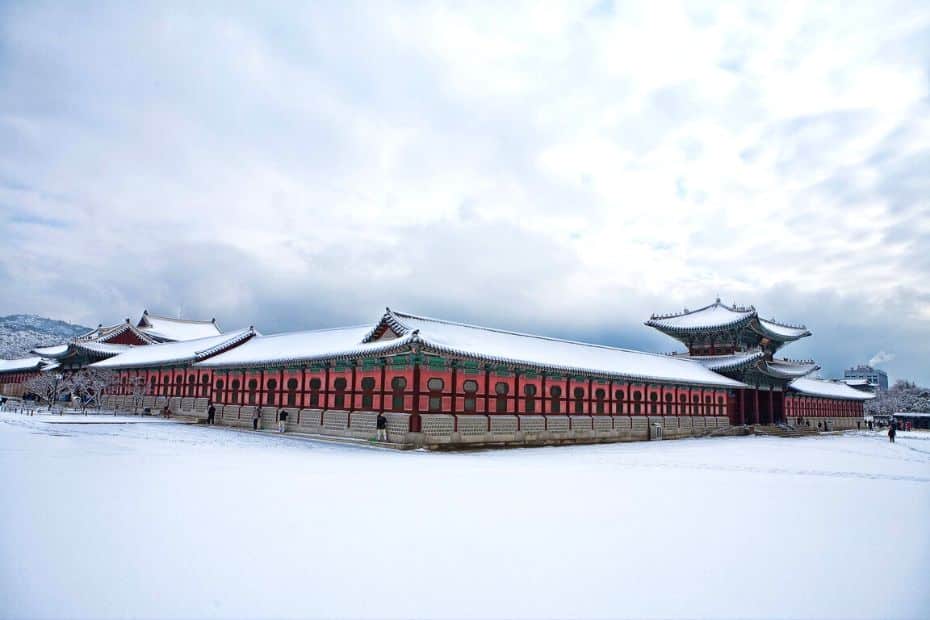

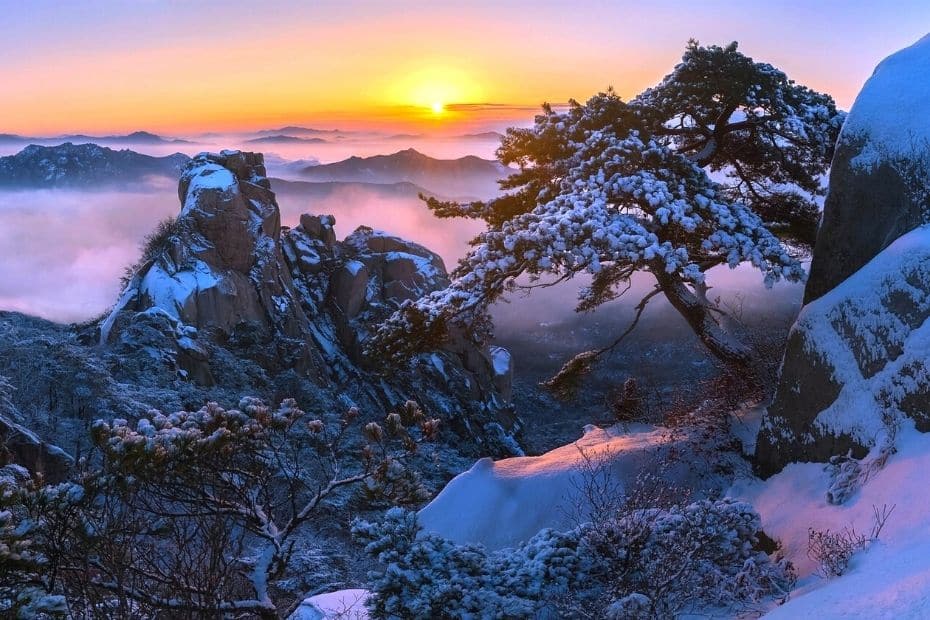
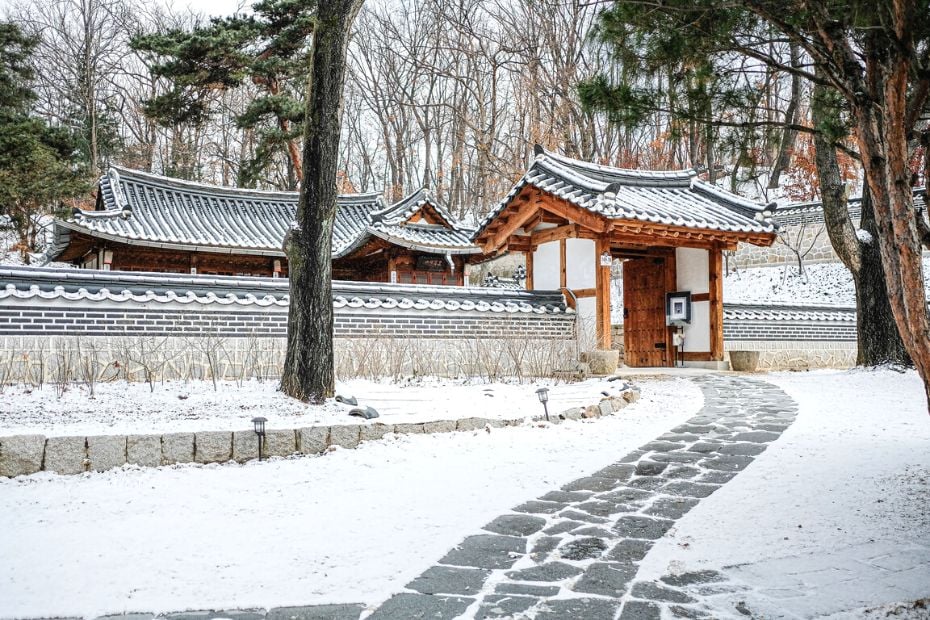
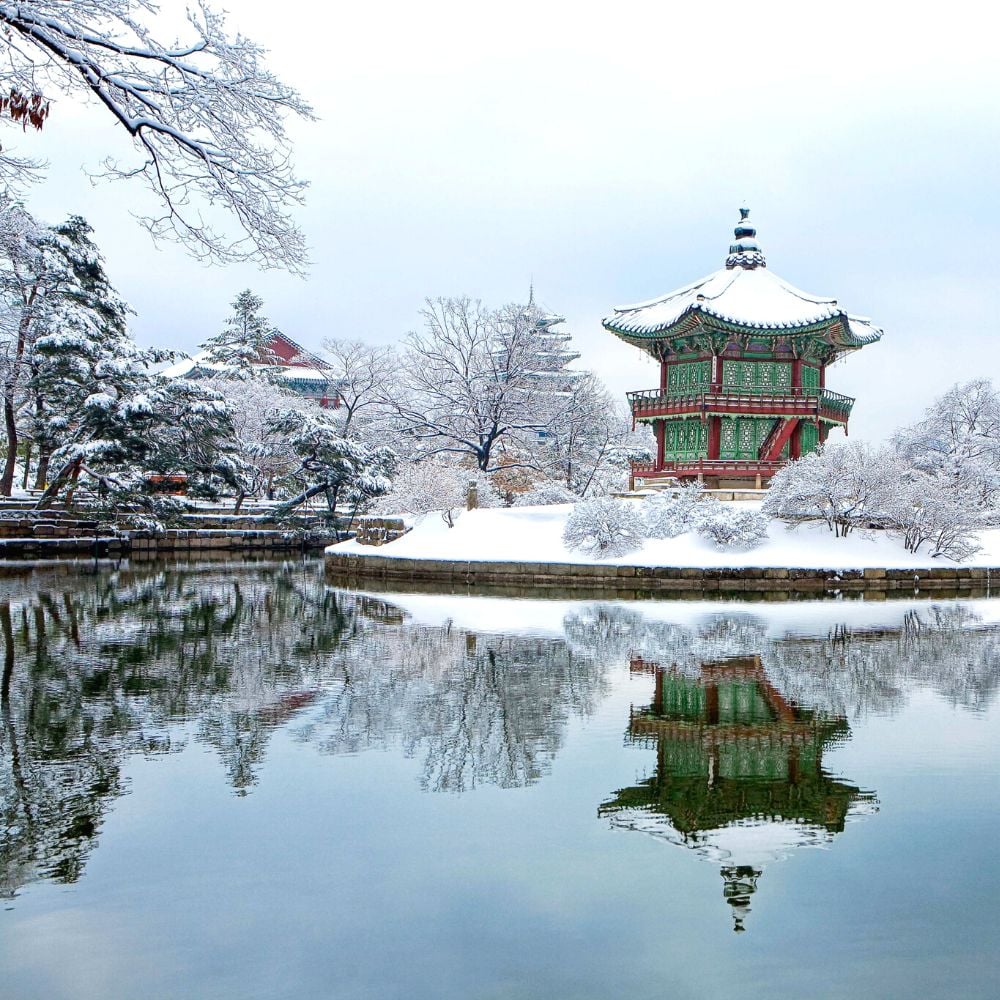
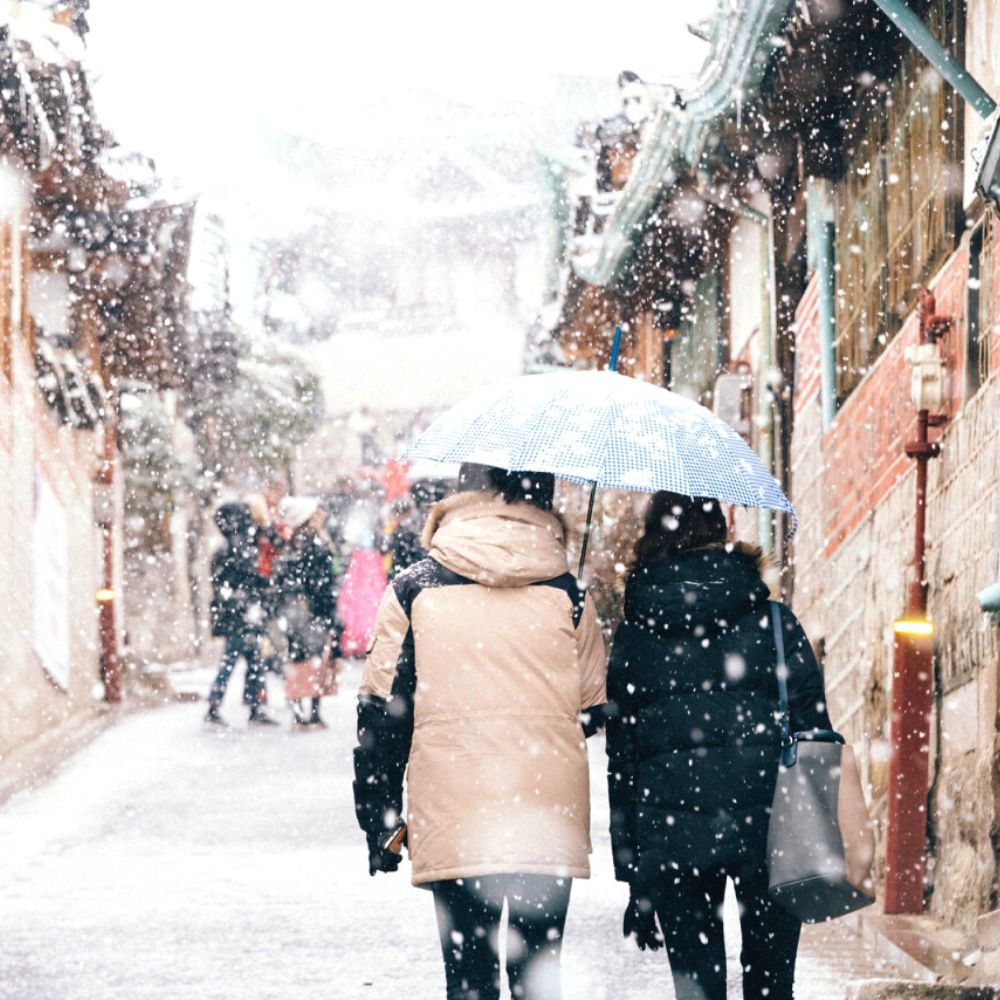
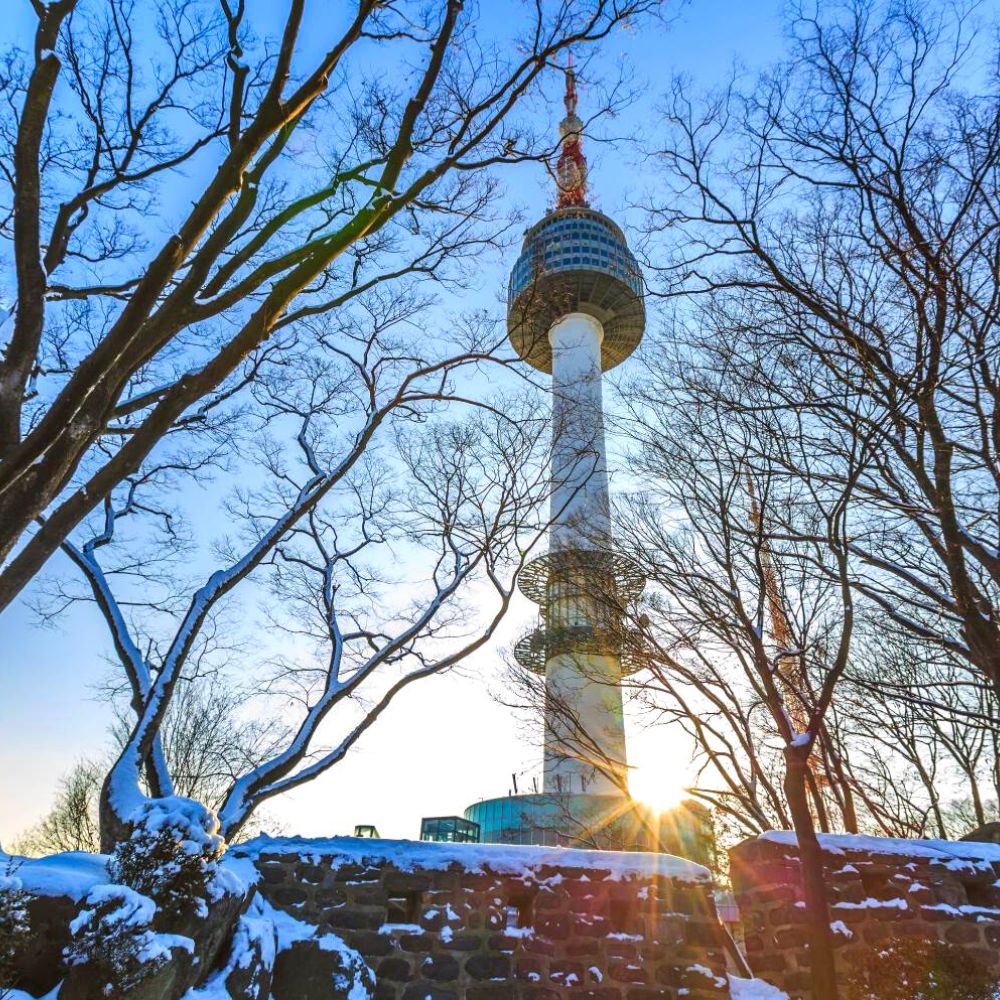
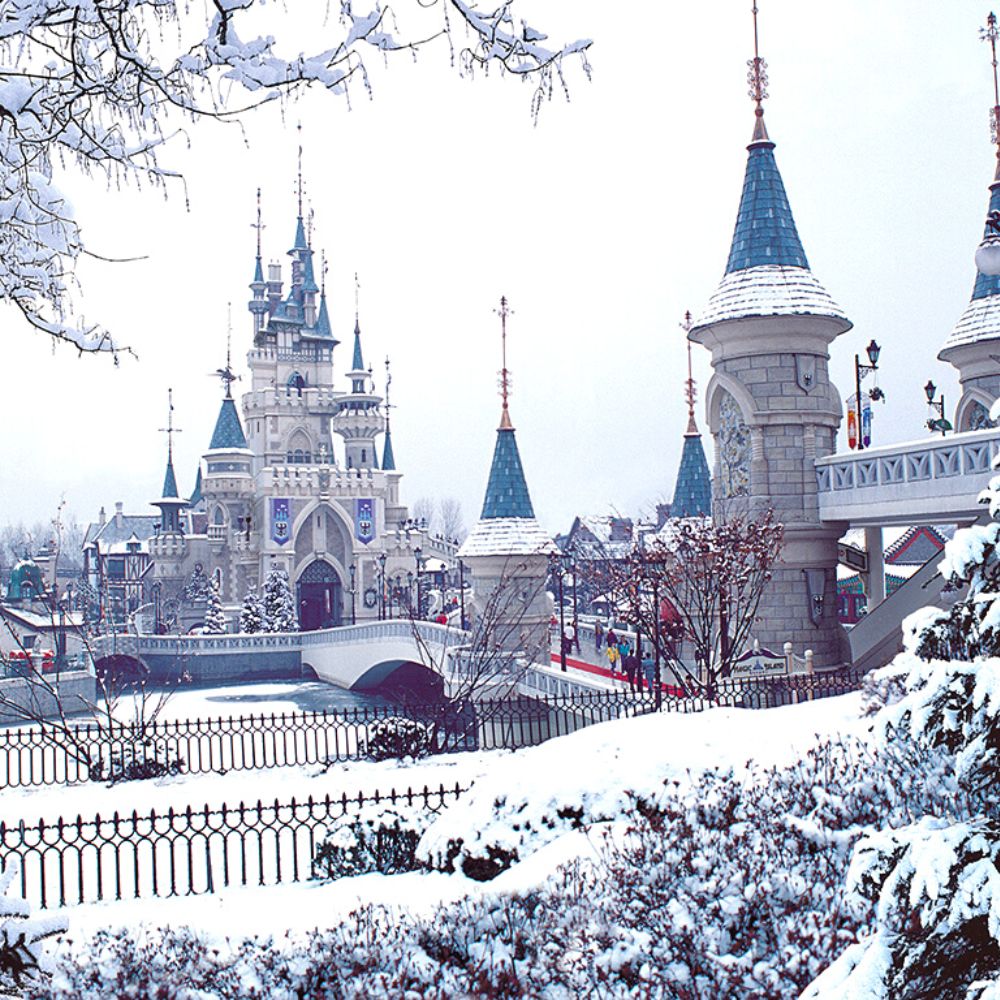
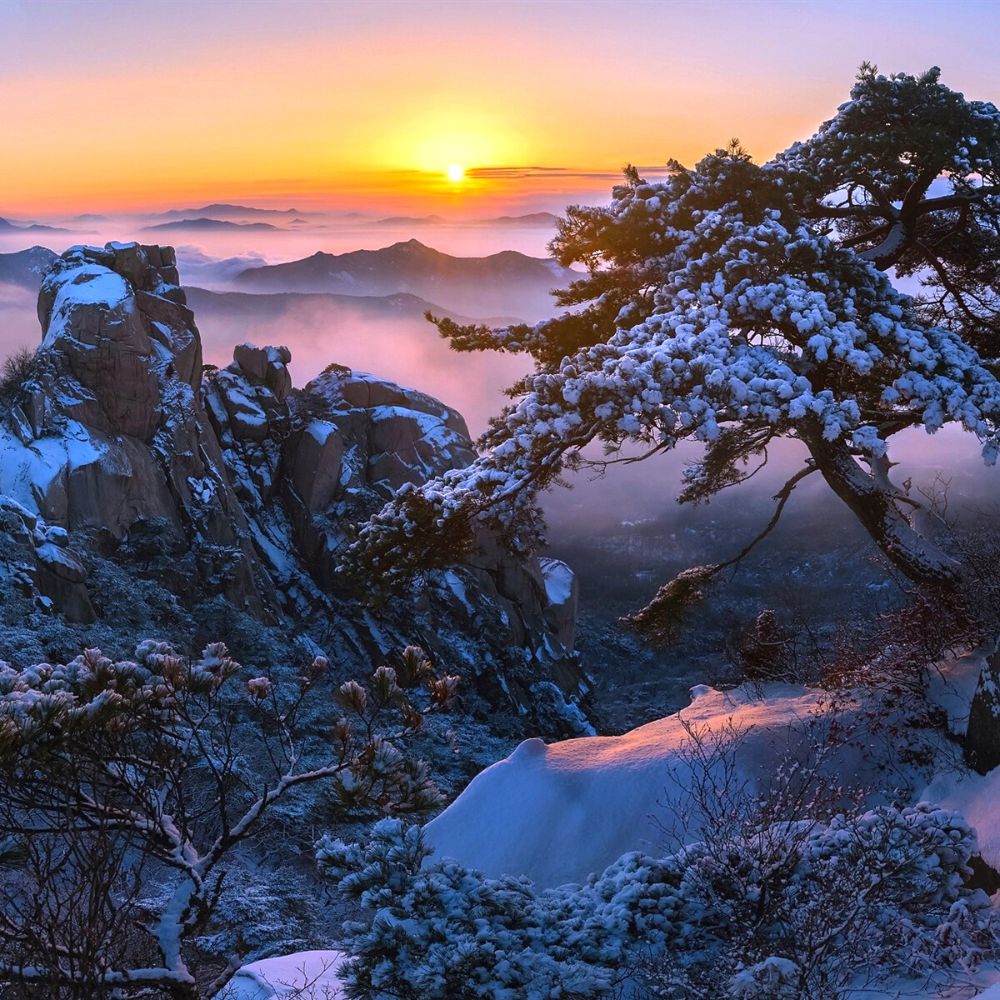
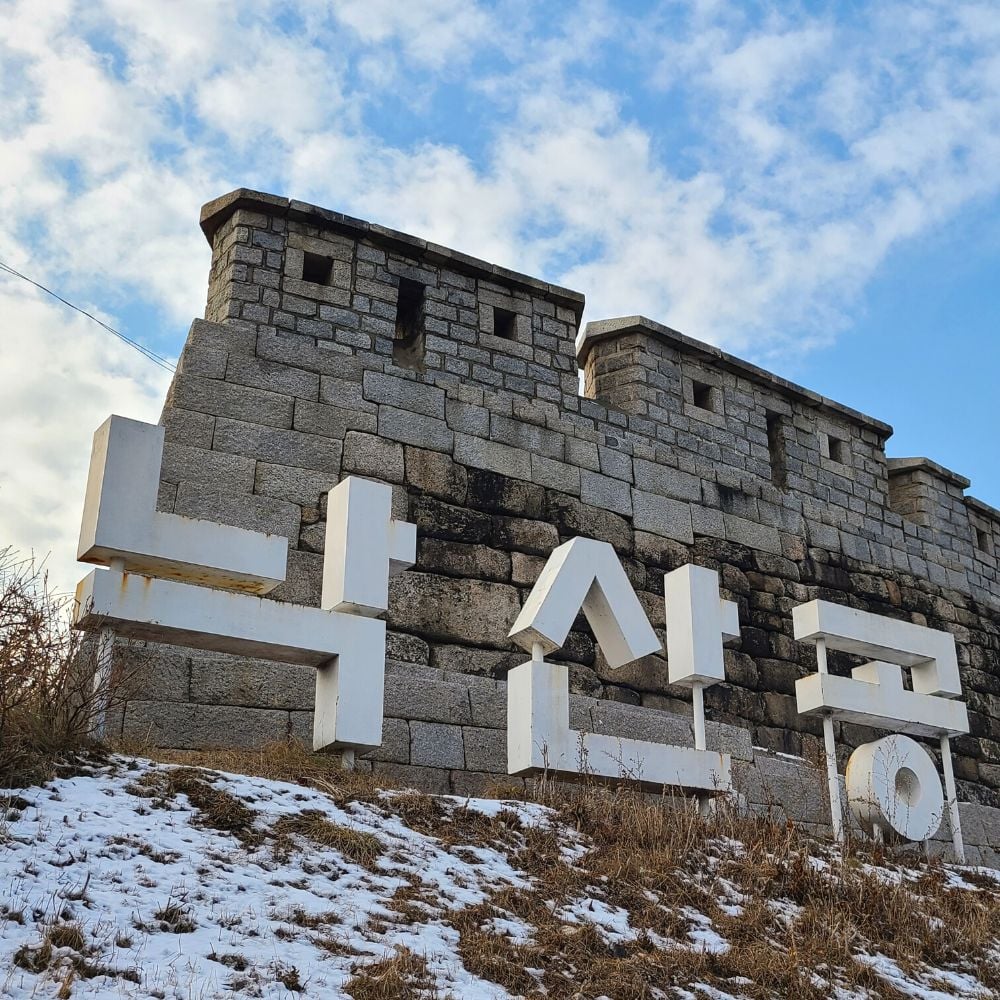
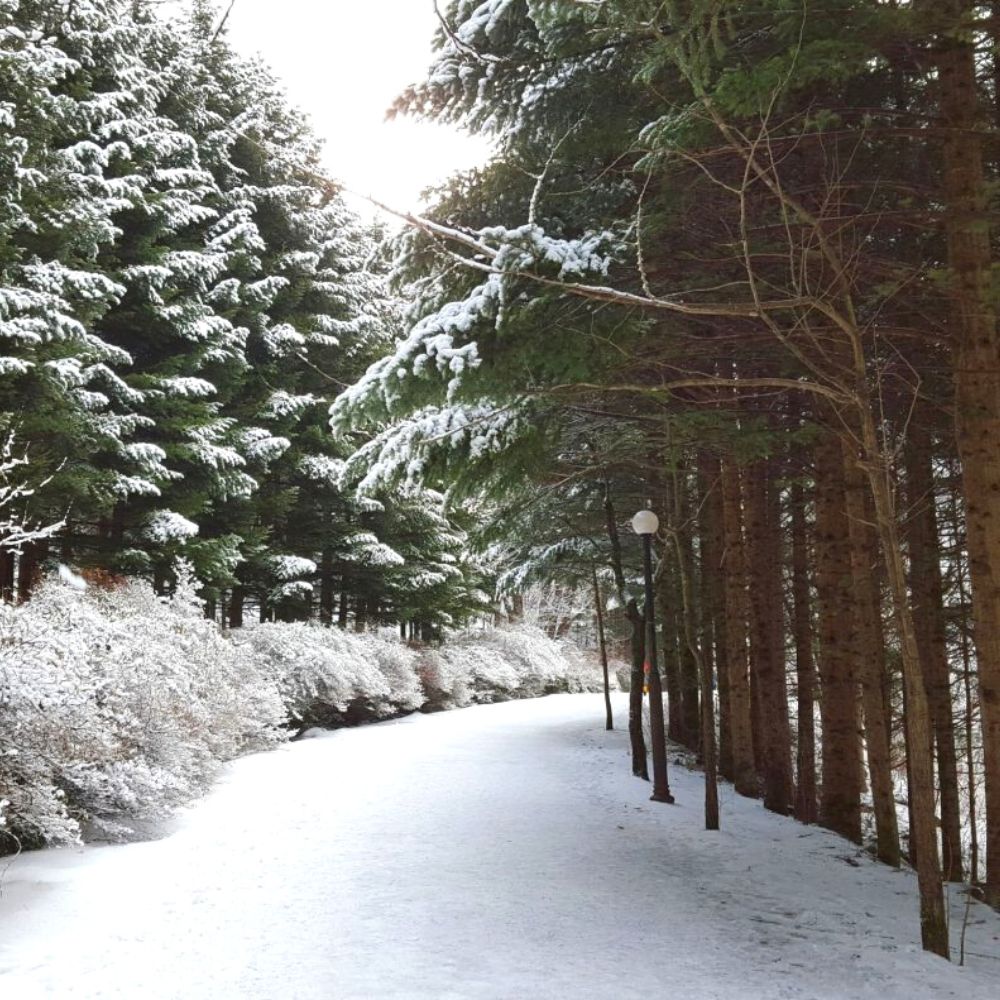
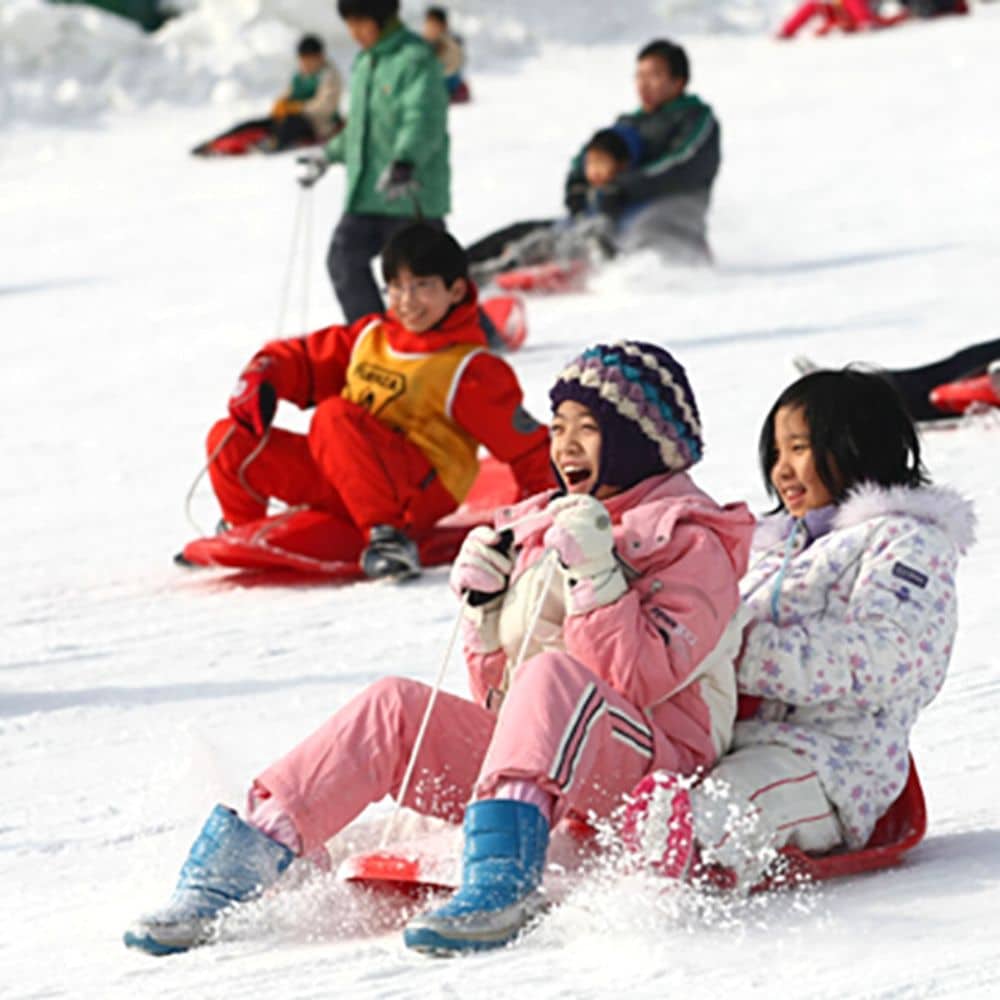
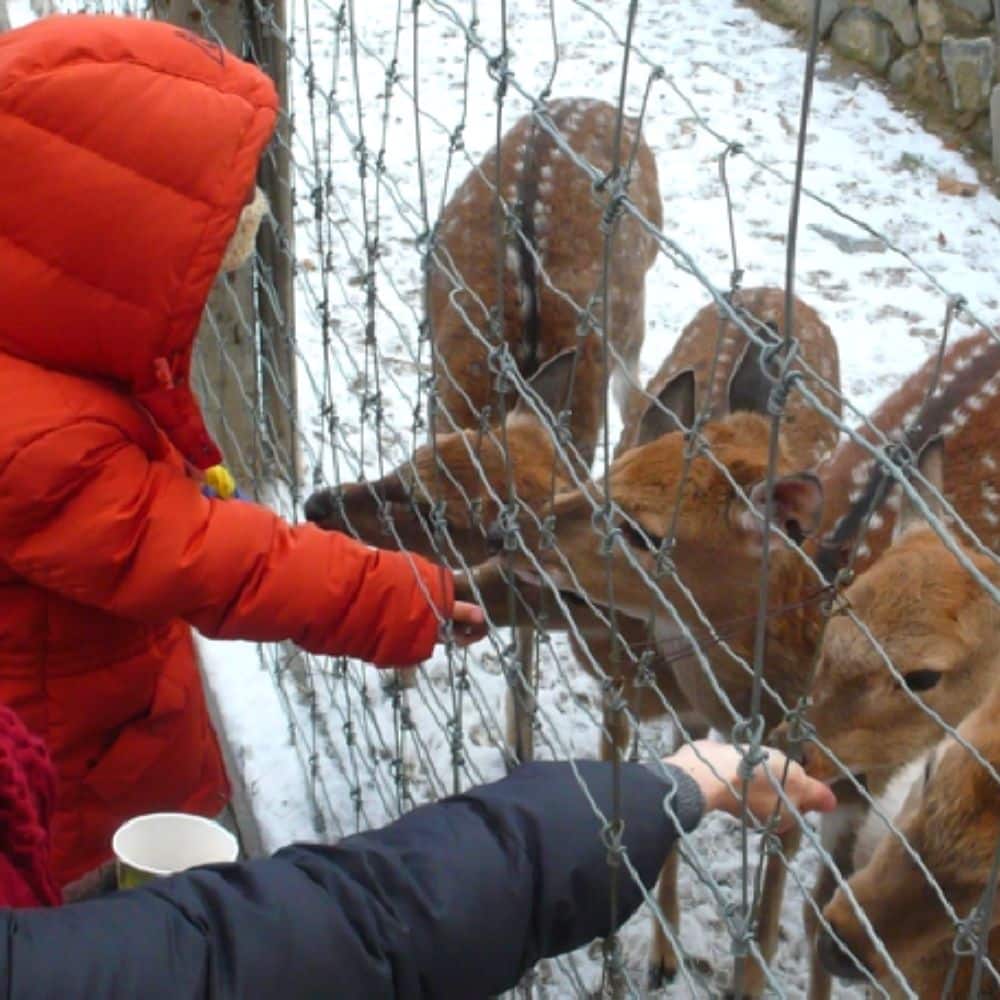
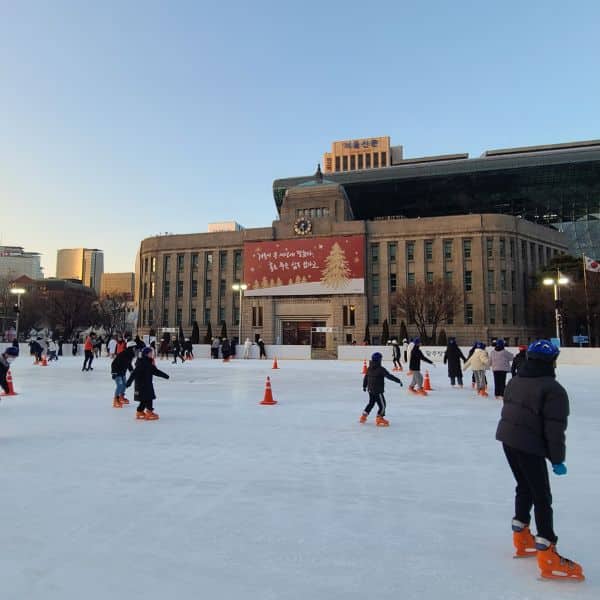
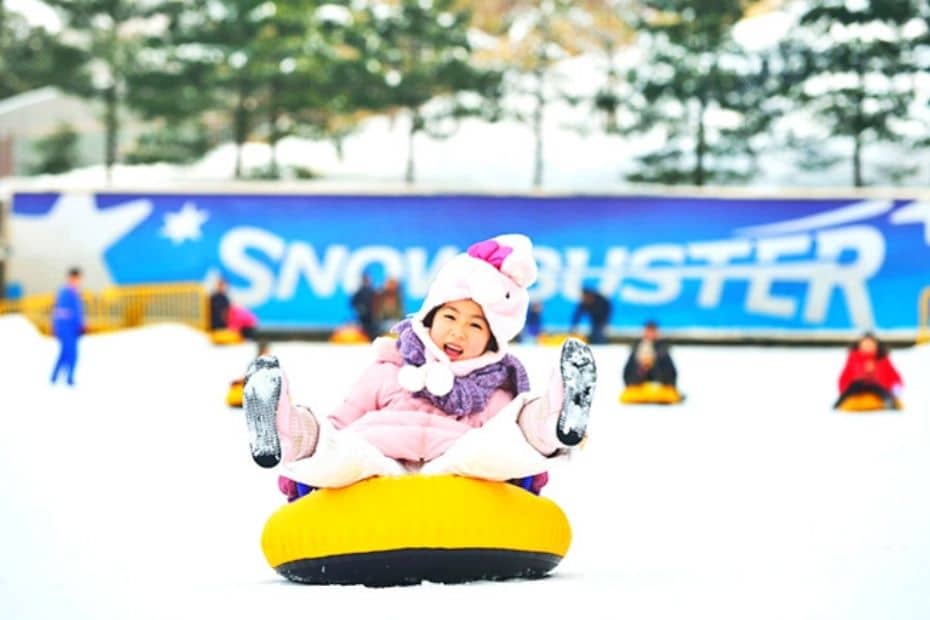

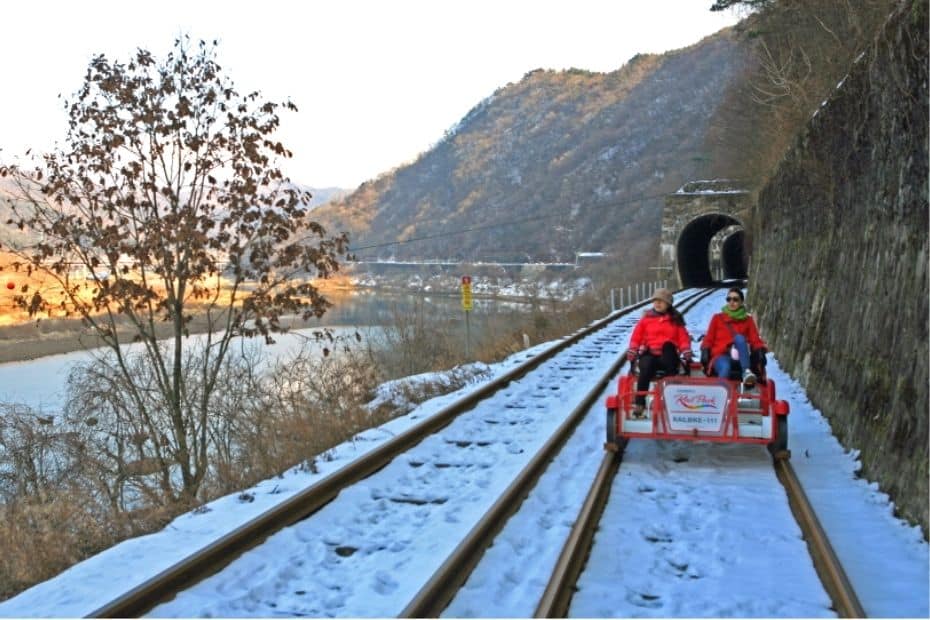
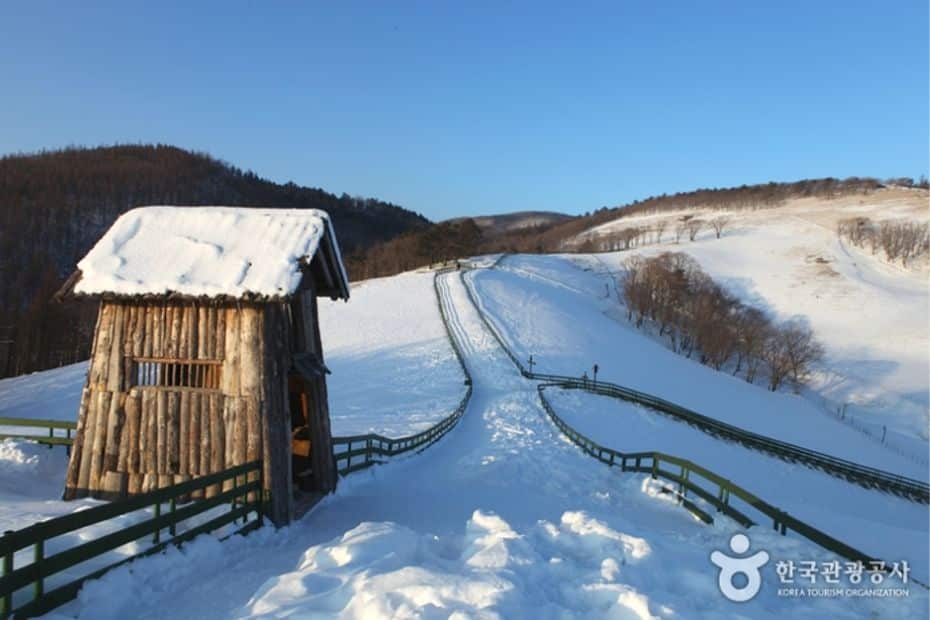

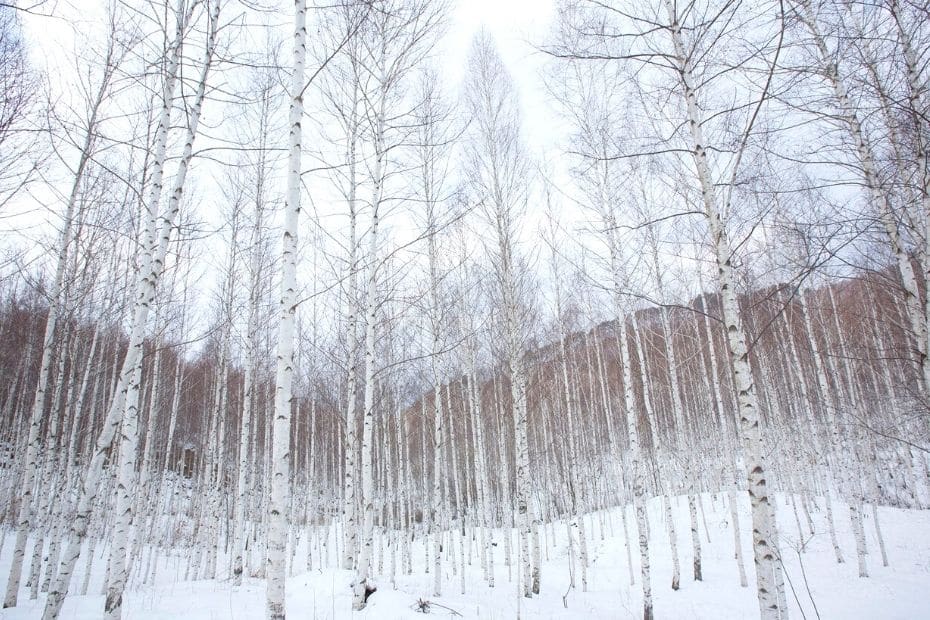

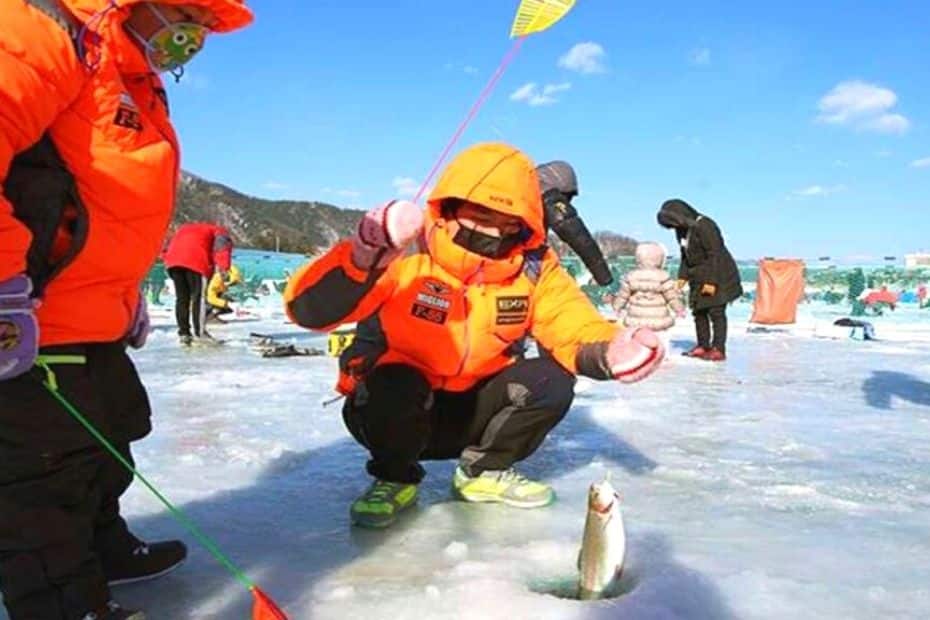
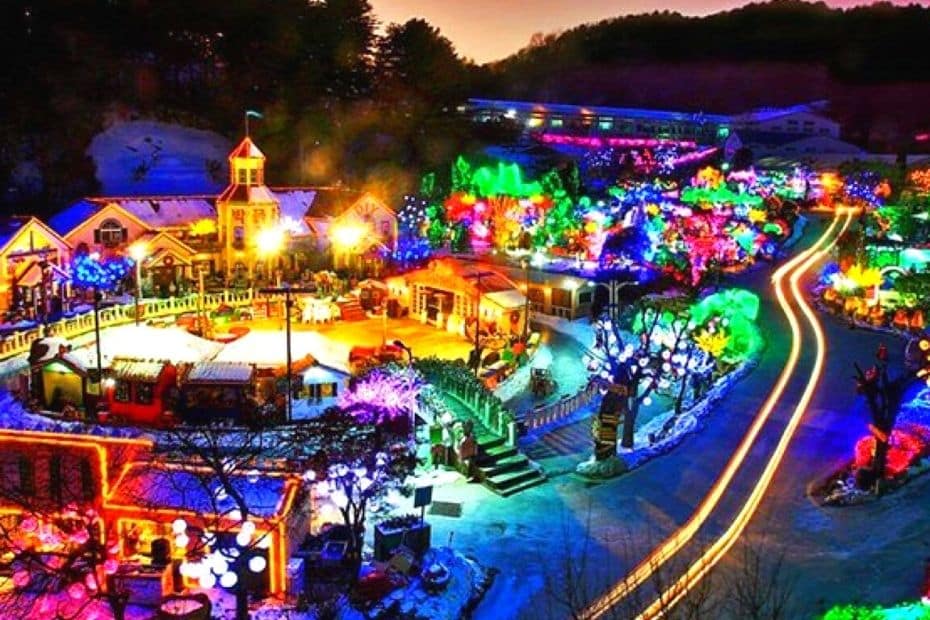
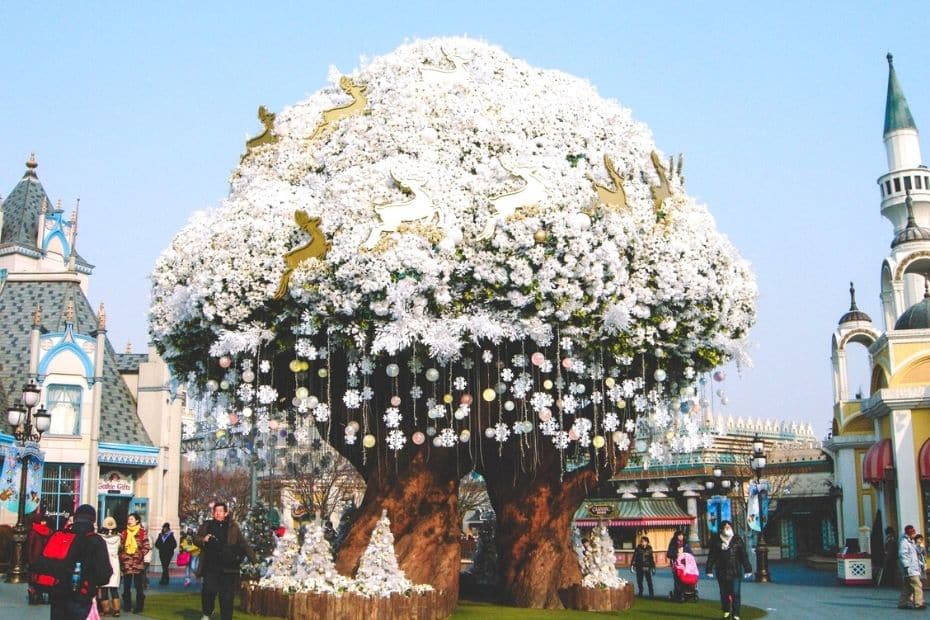
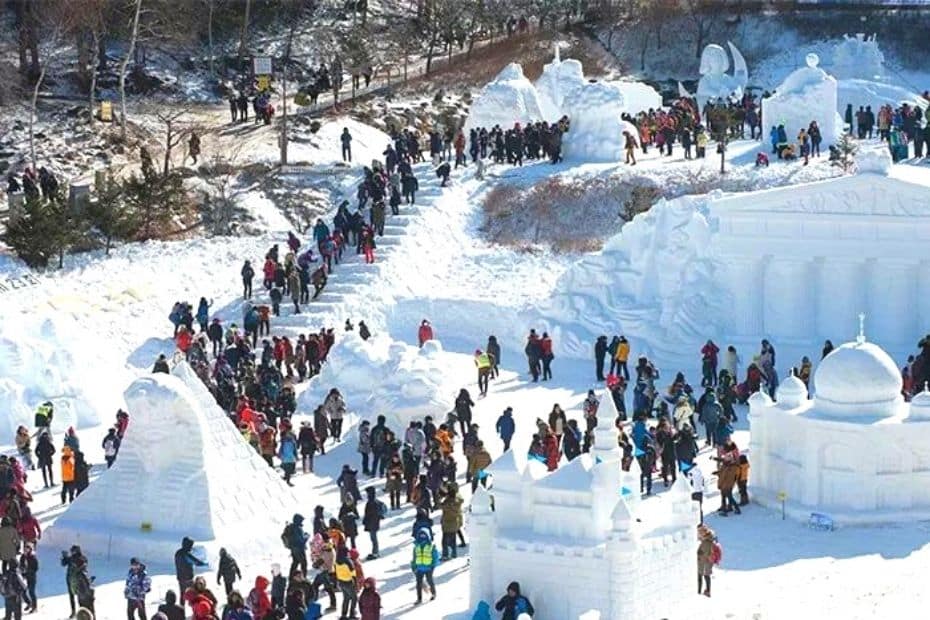
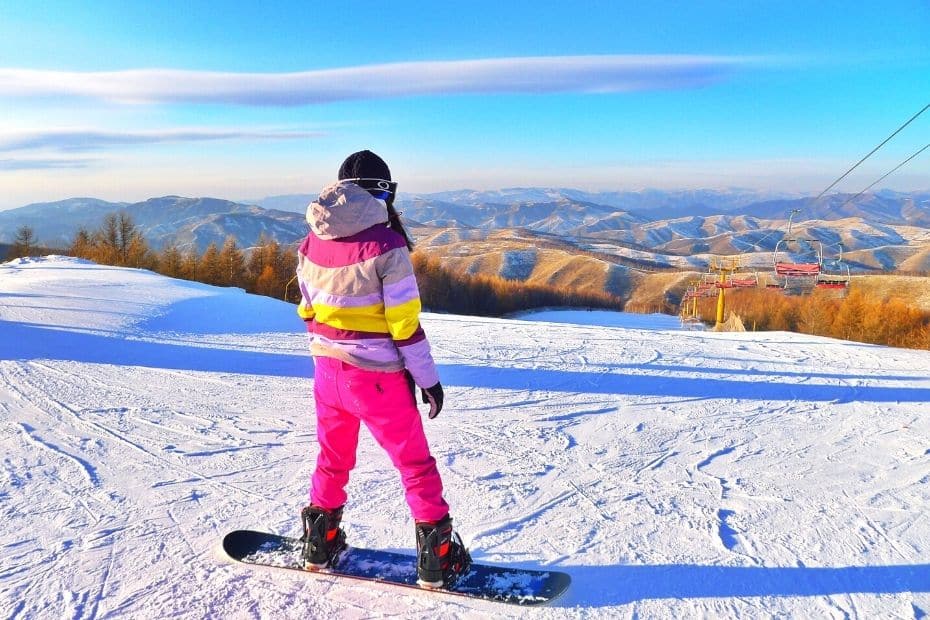
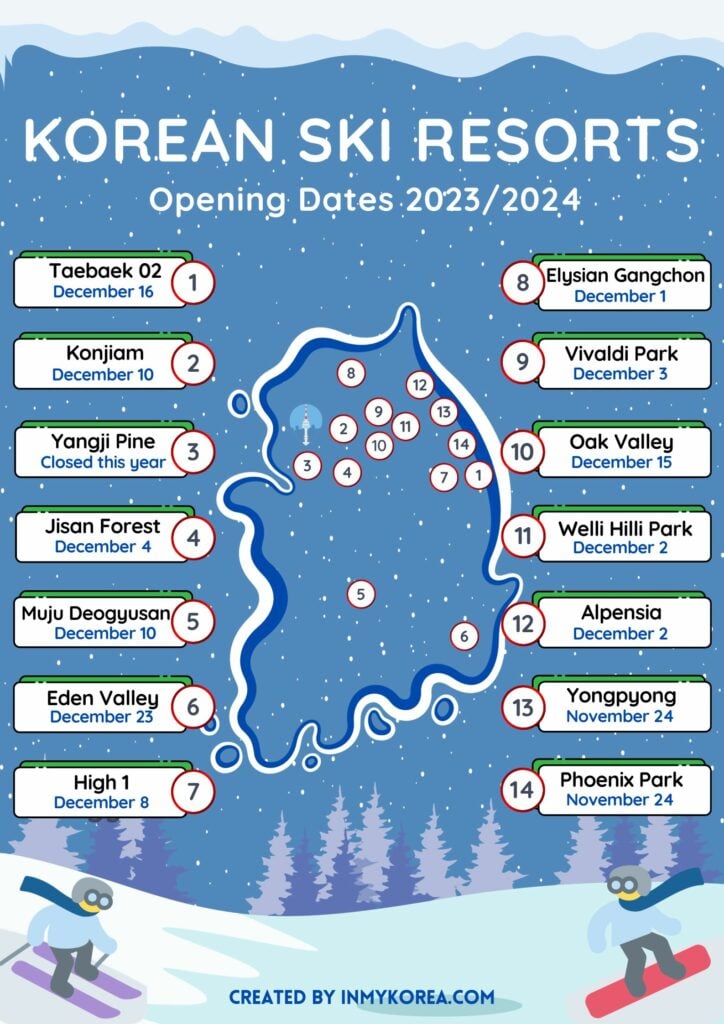
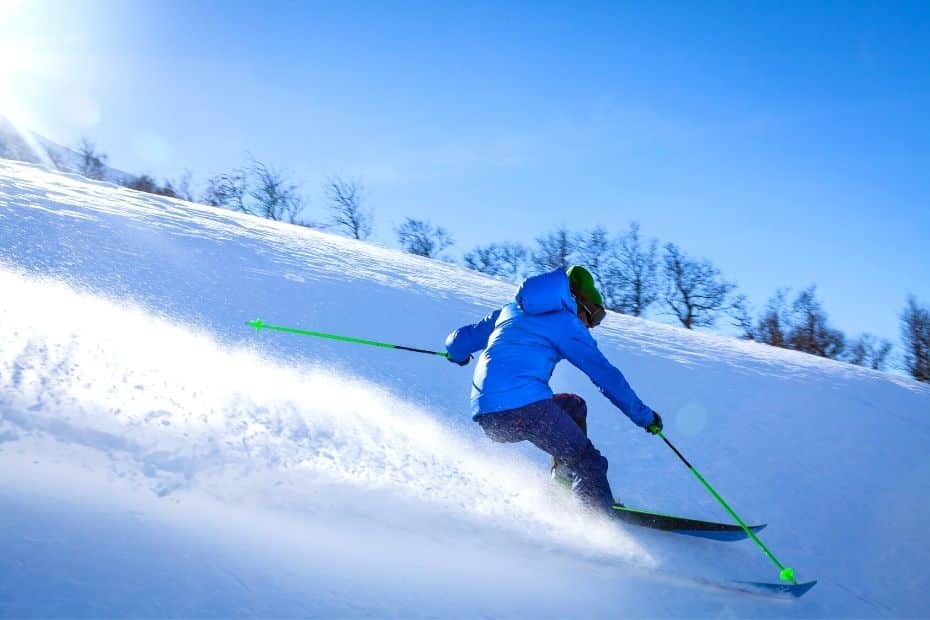

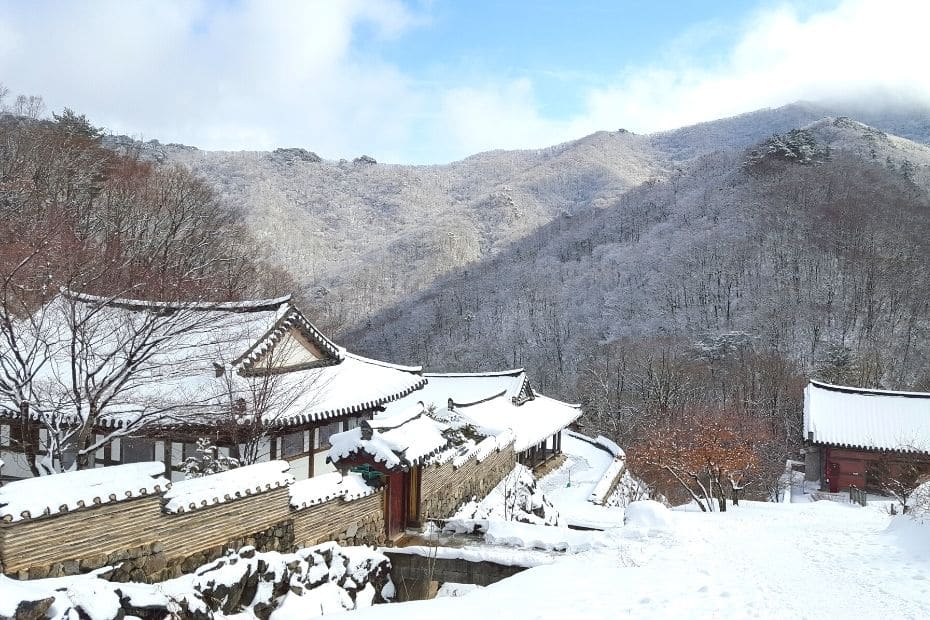
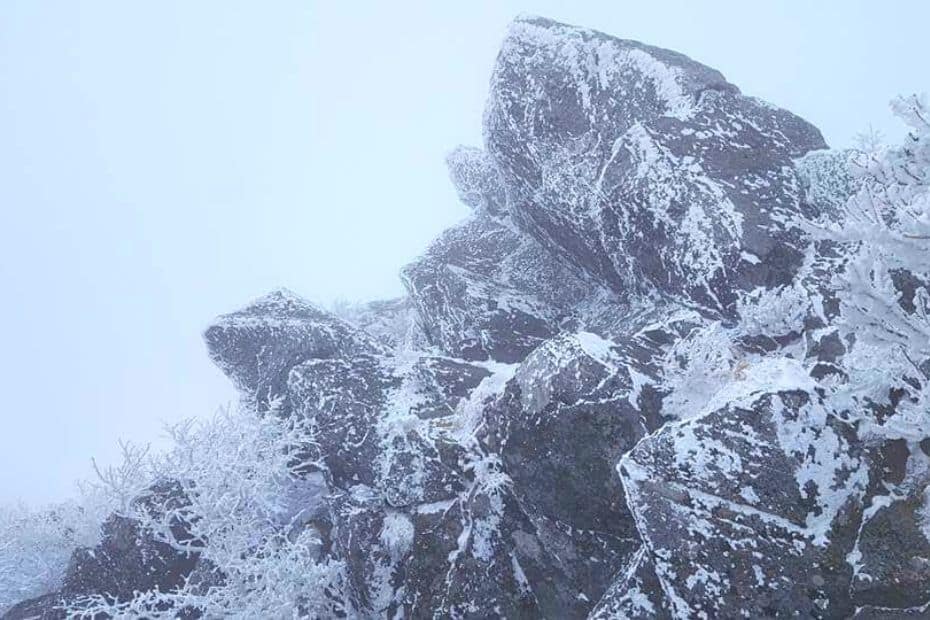

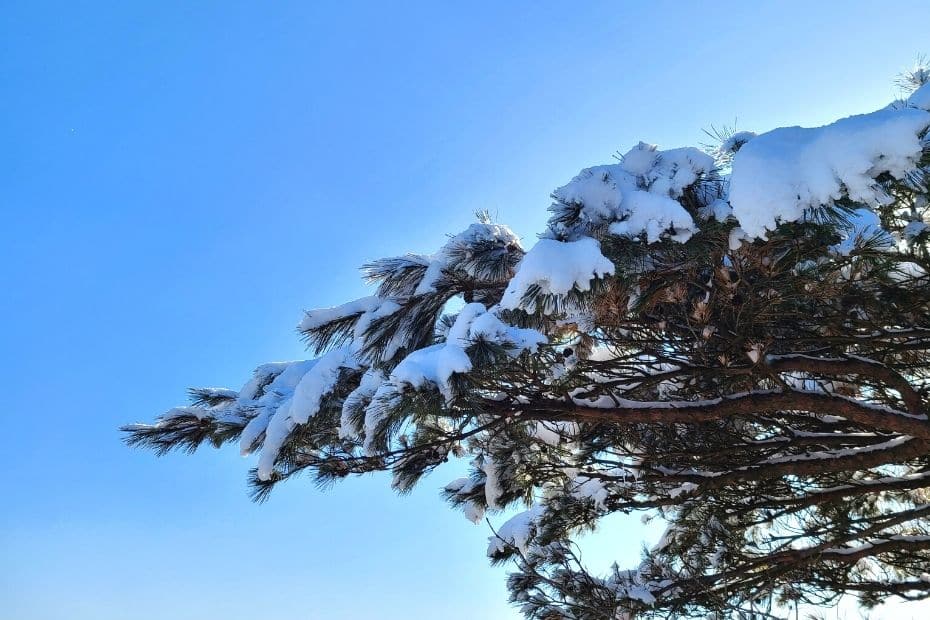
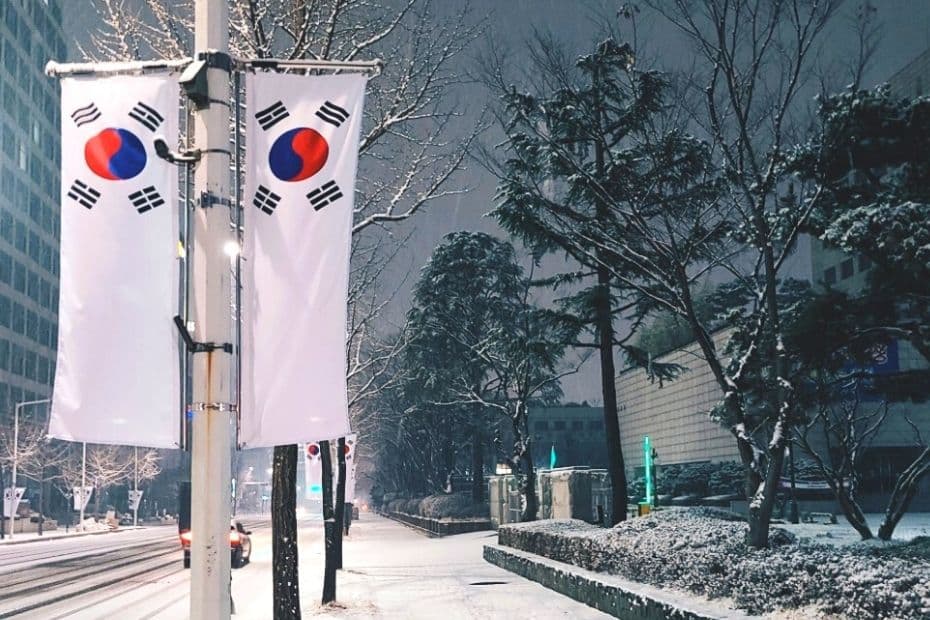
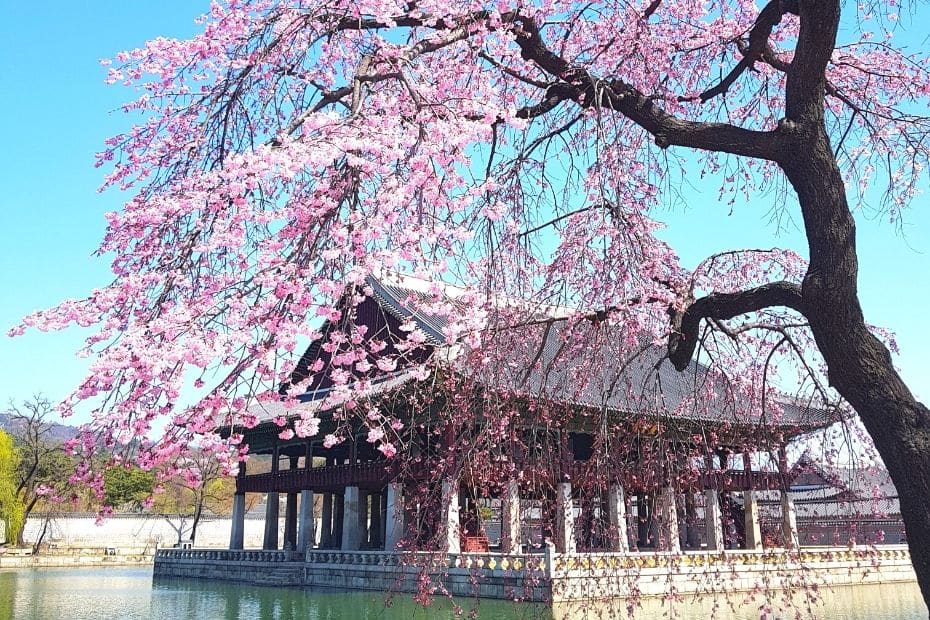



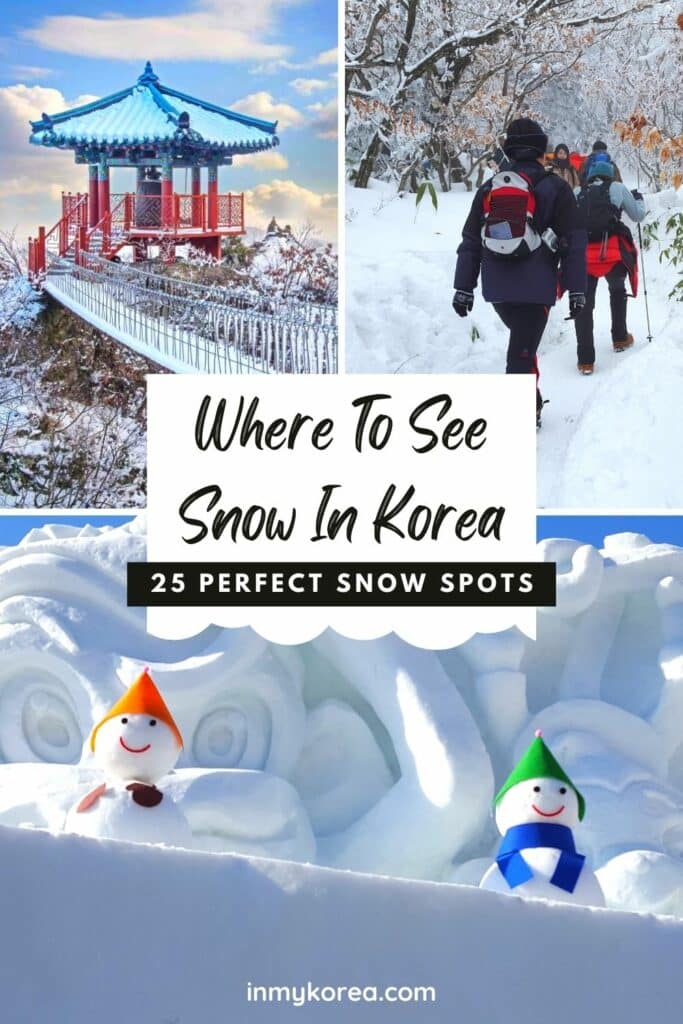
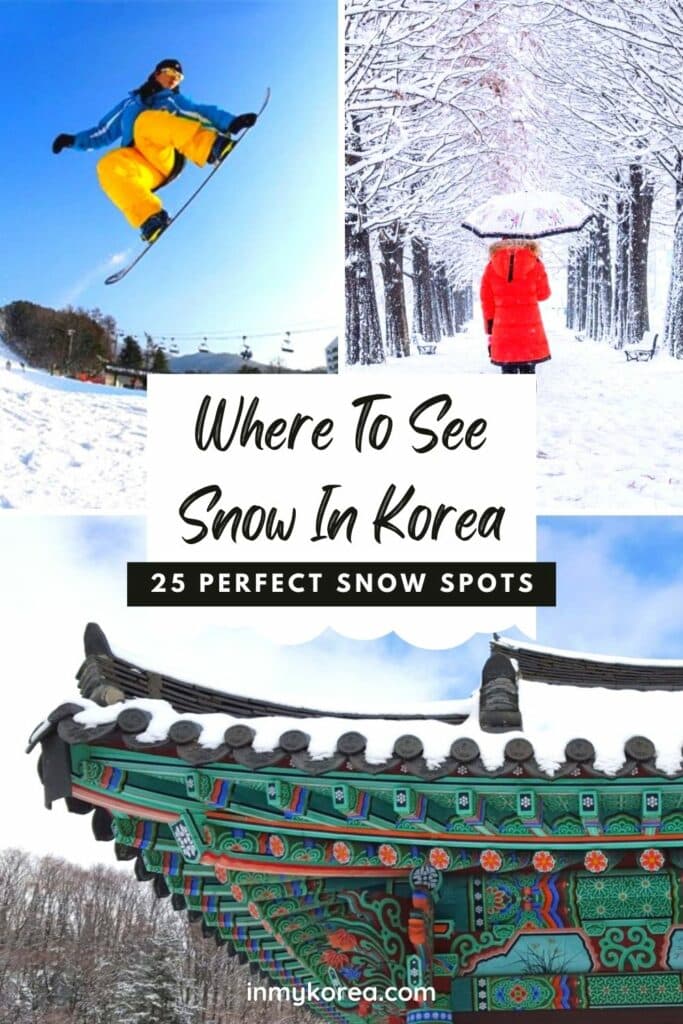
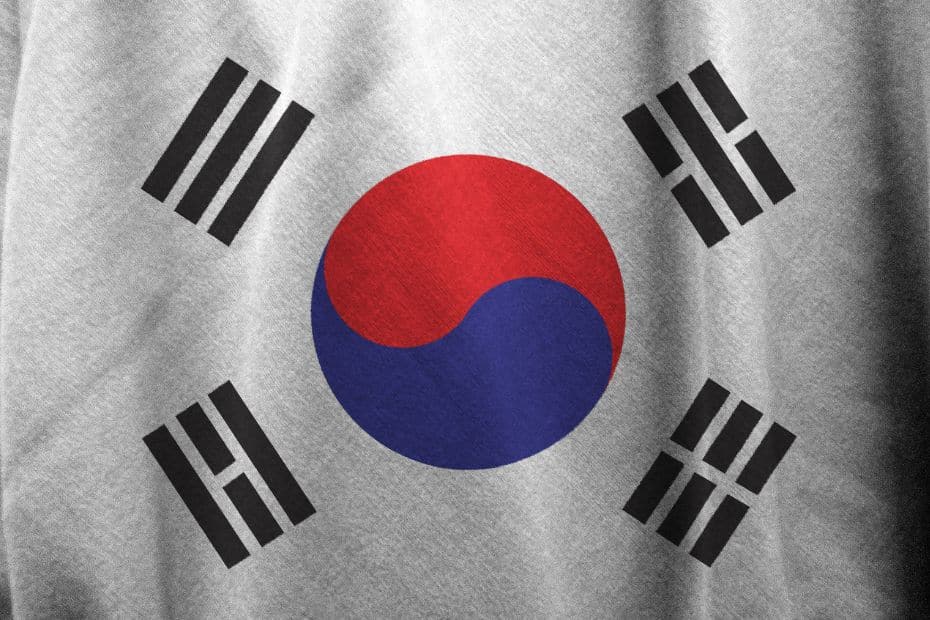

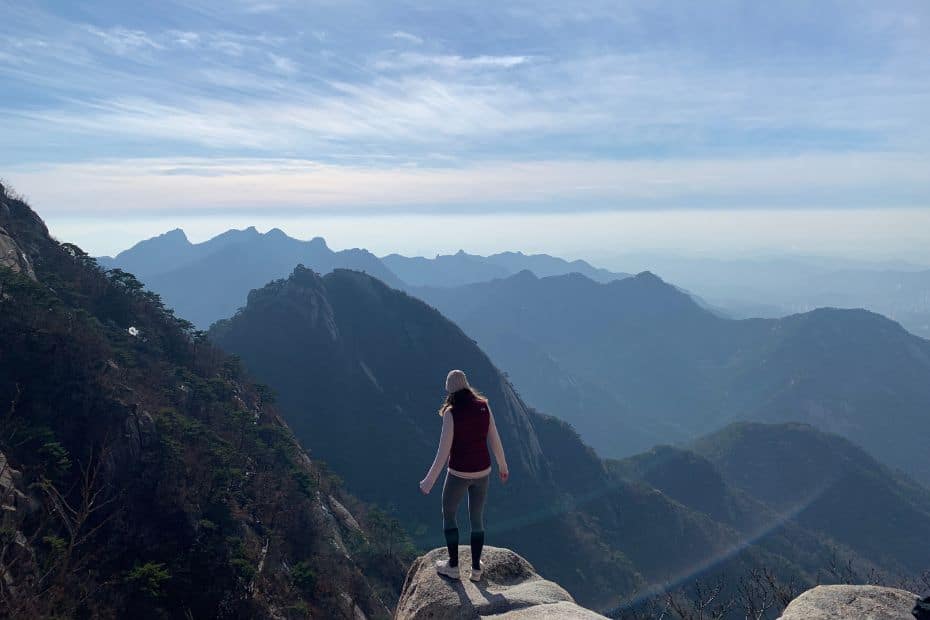

I love reading about all the different places that snow falls in Korea! This post has some great recommendations.